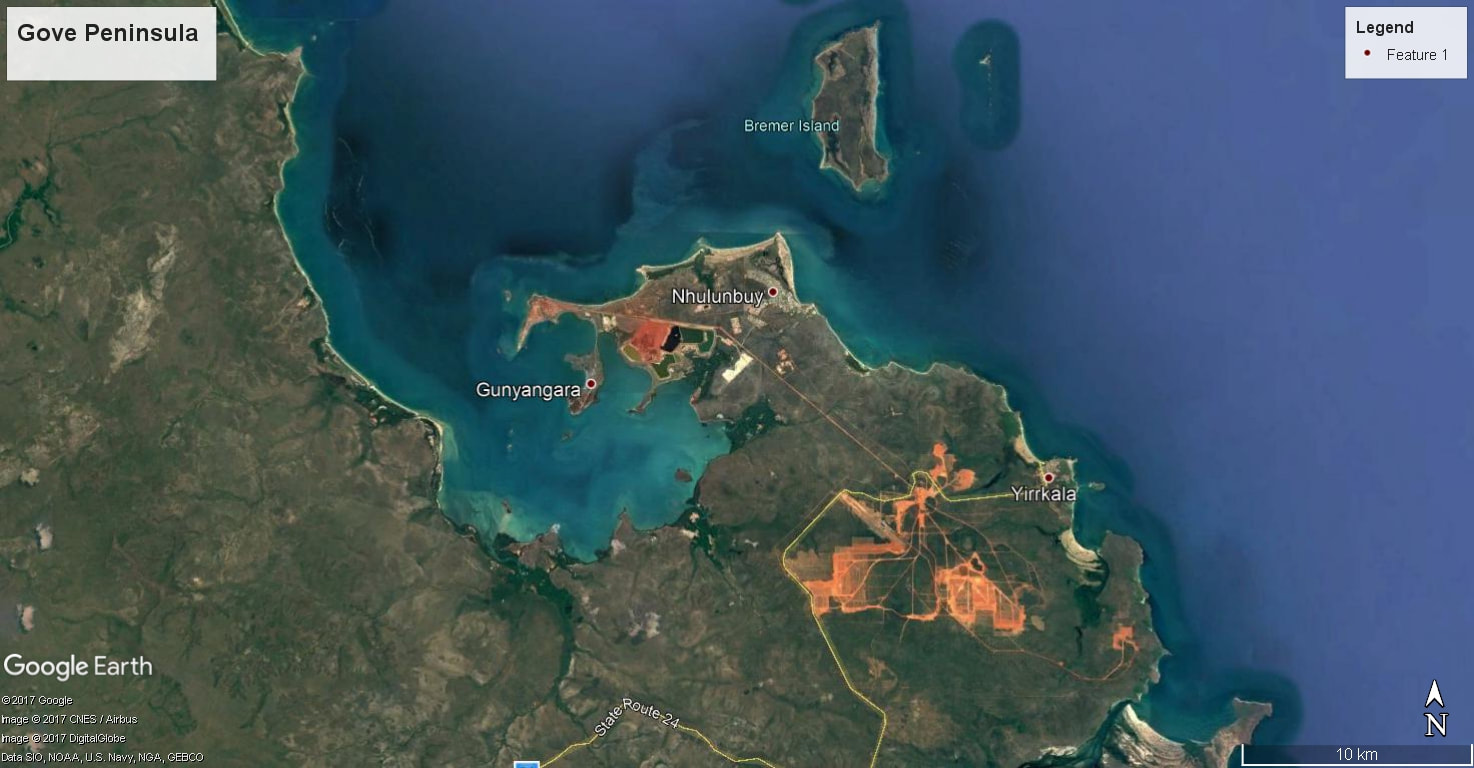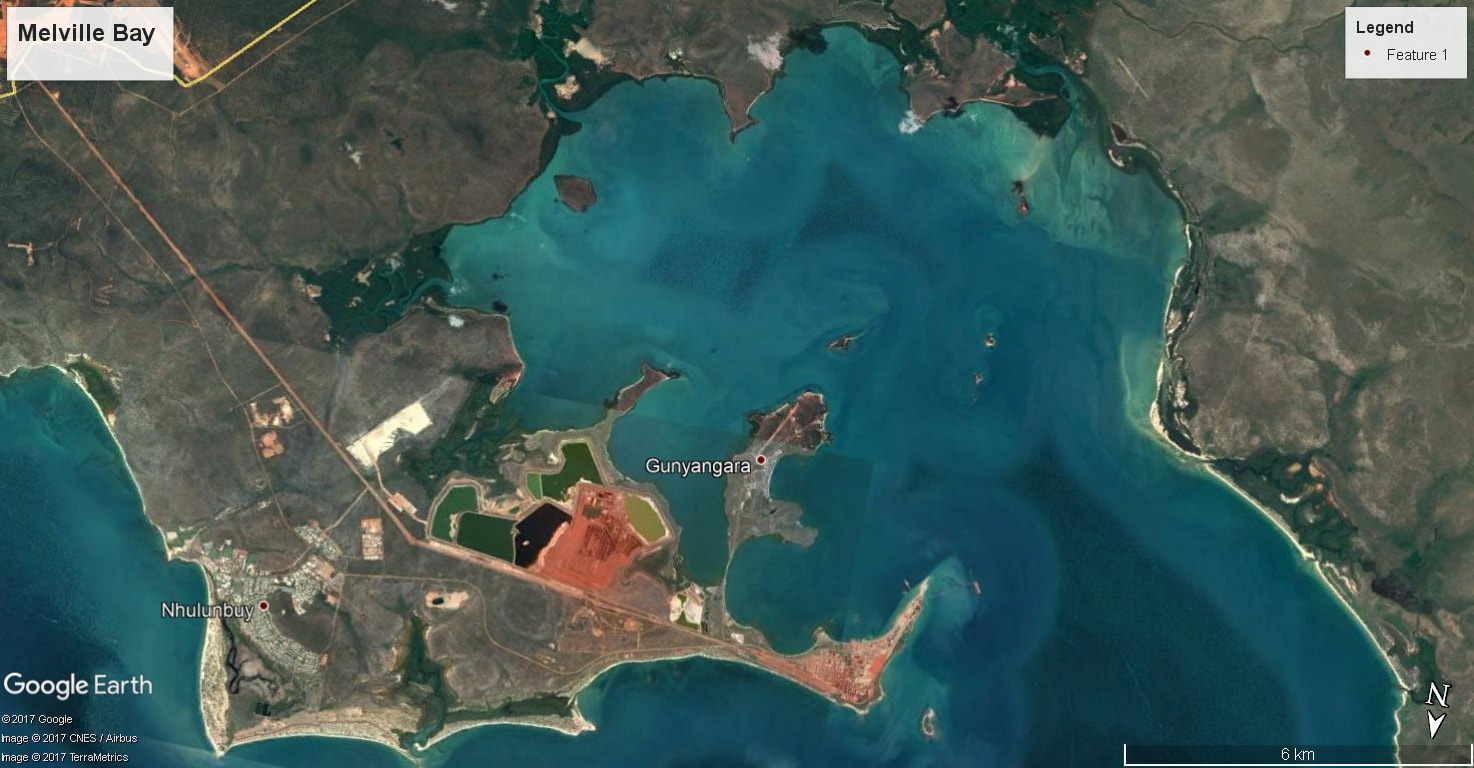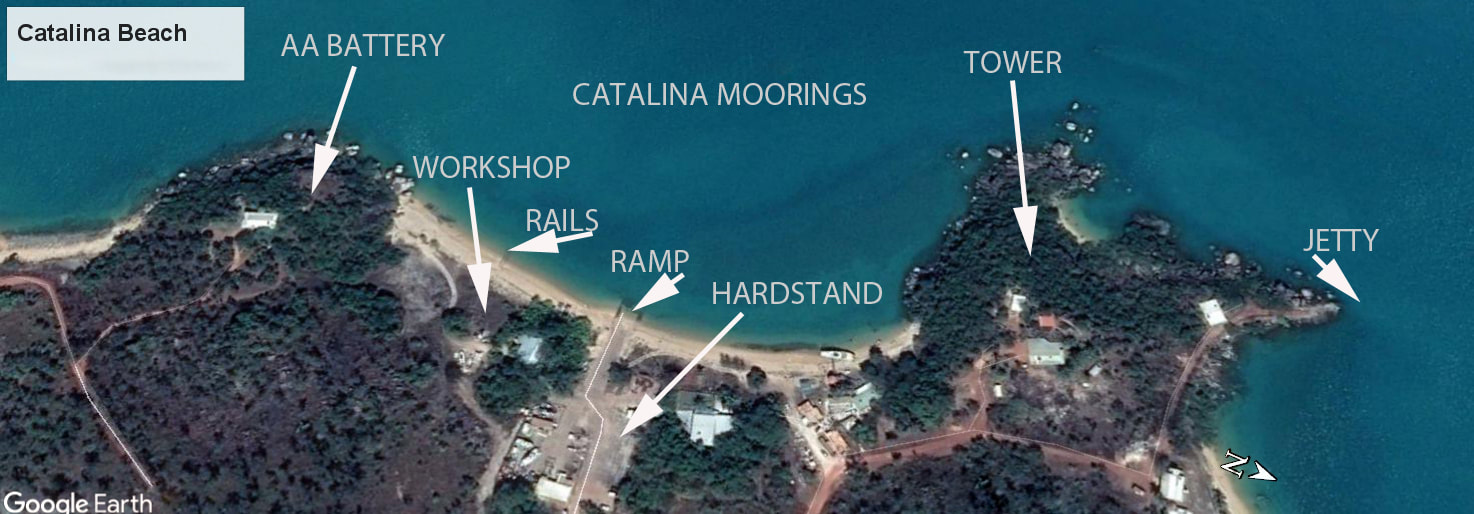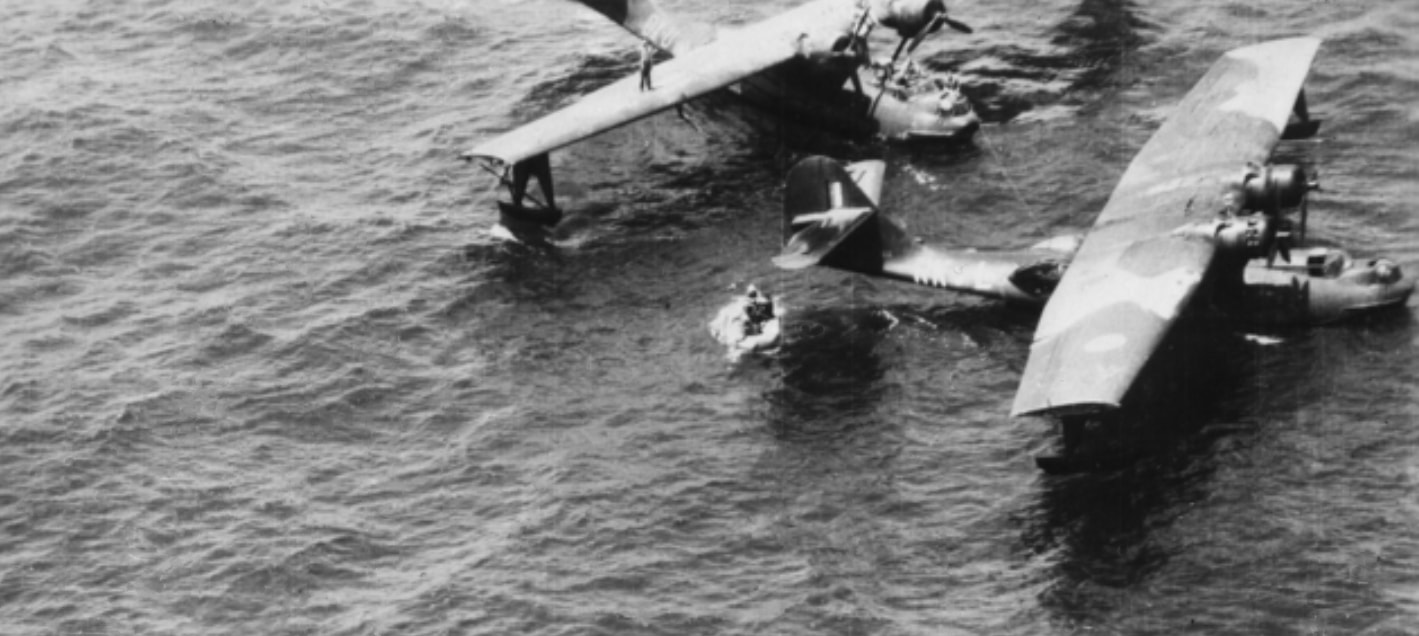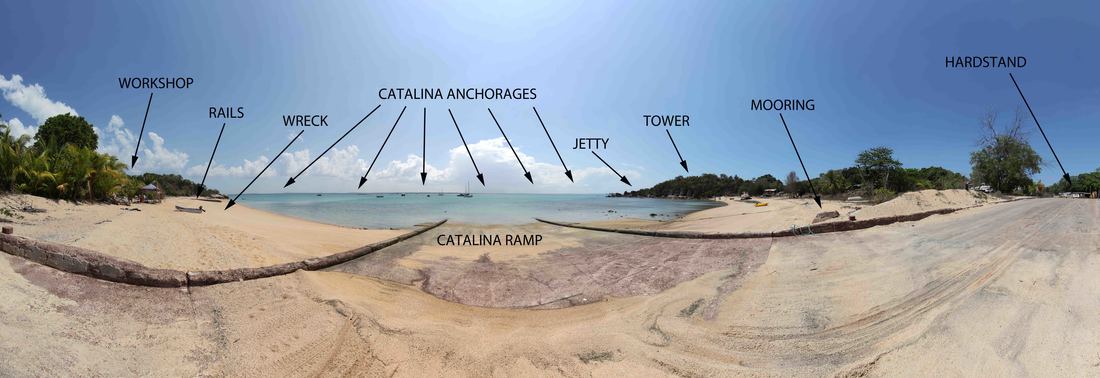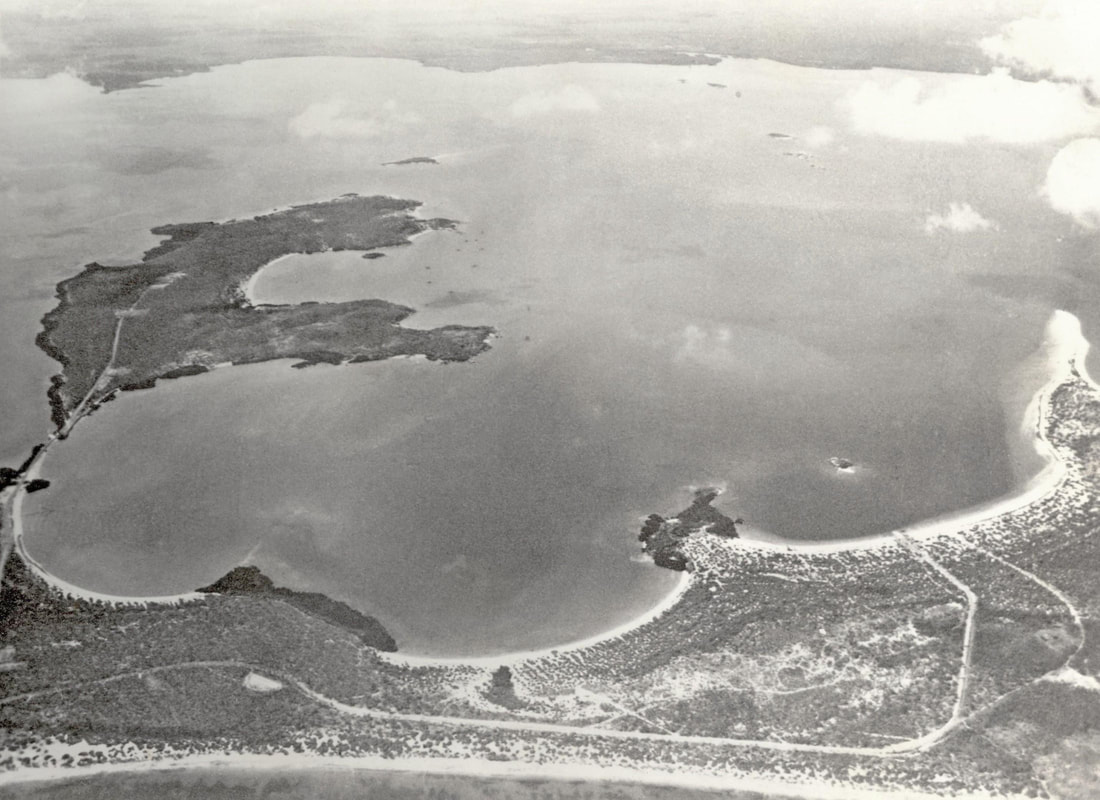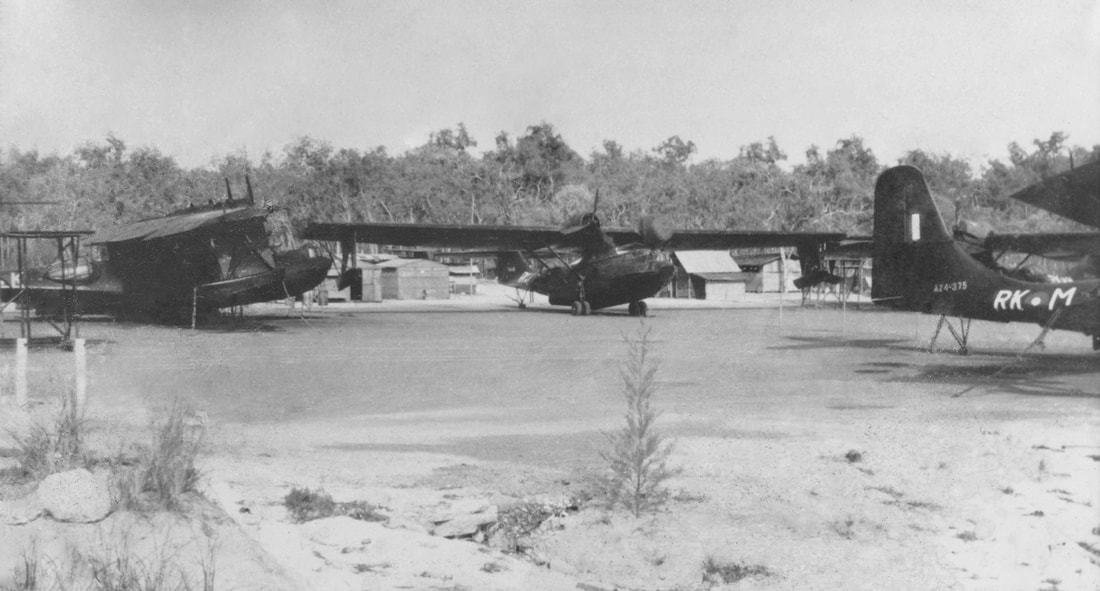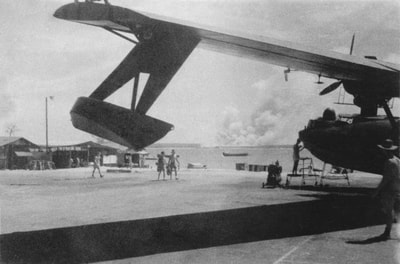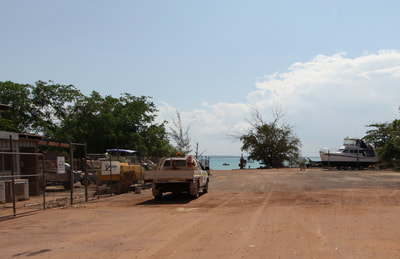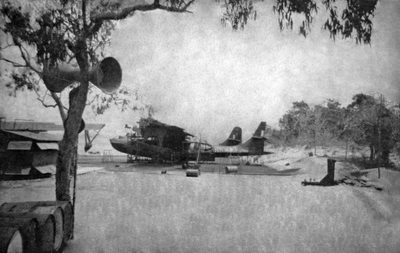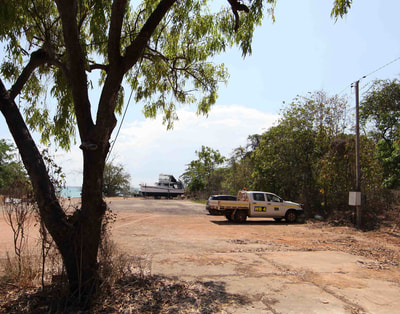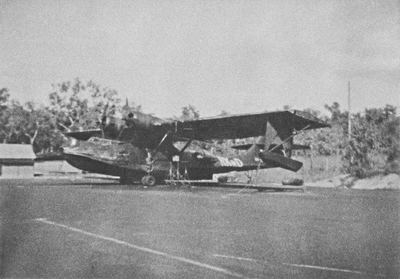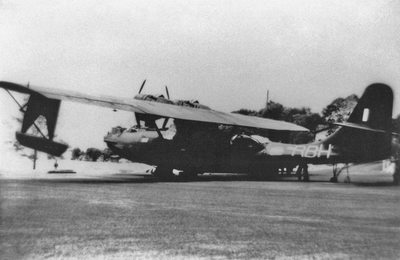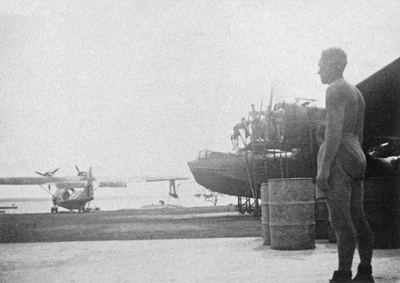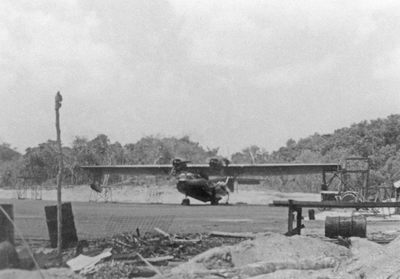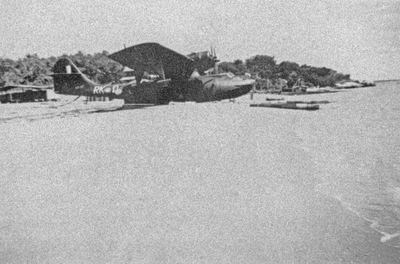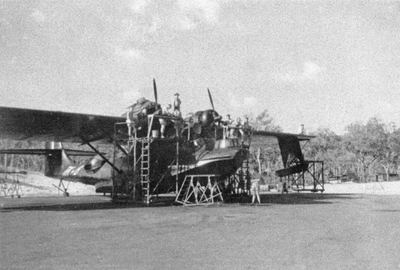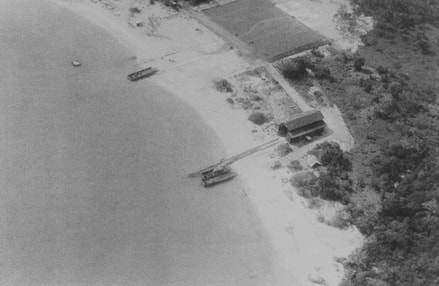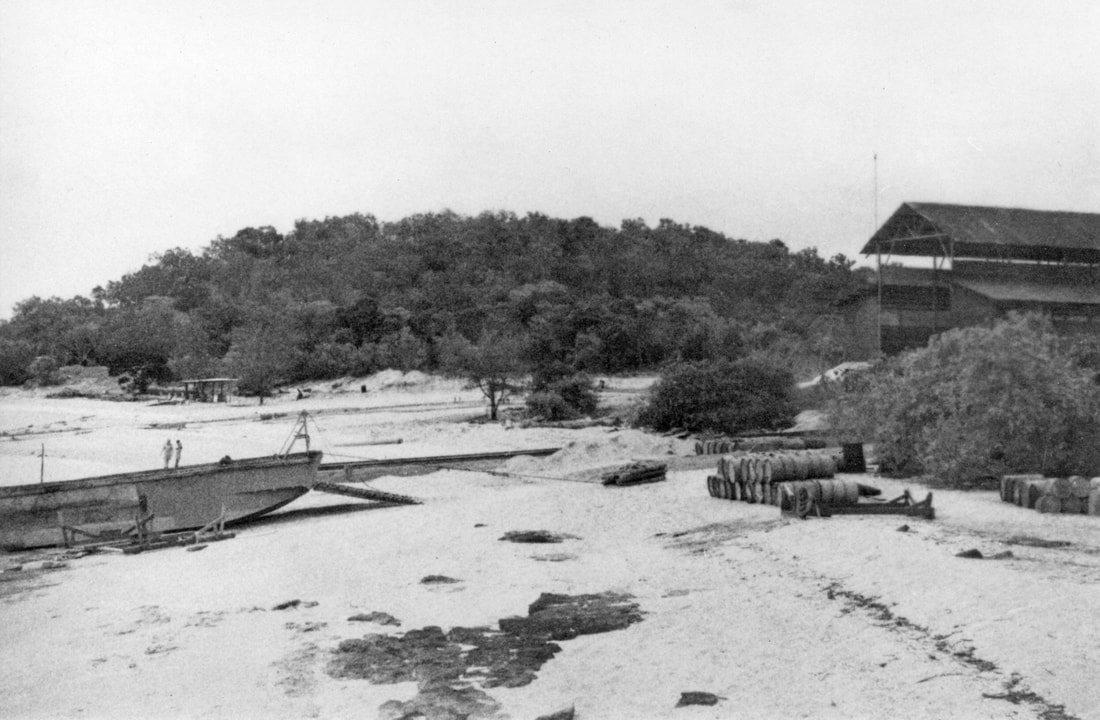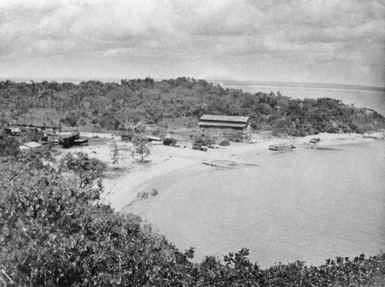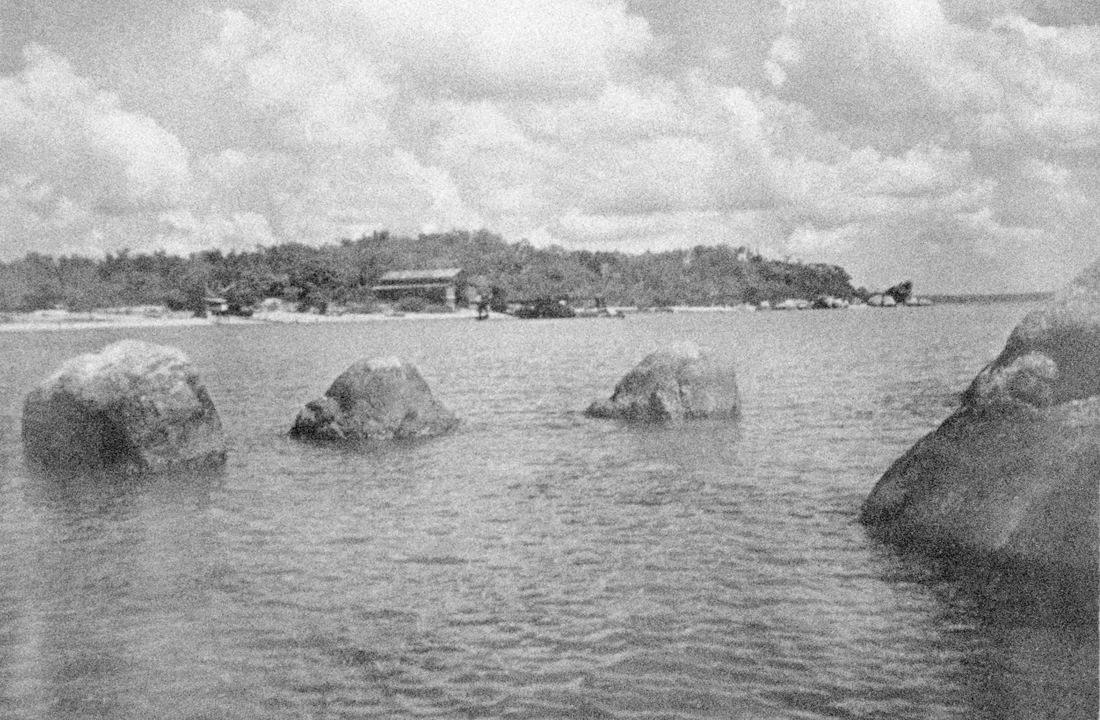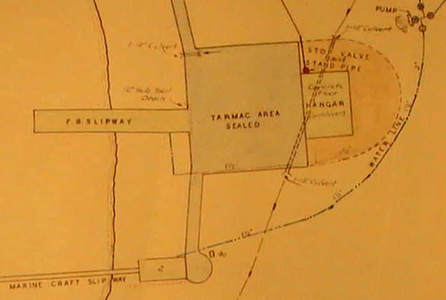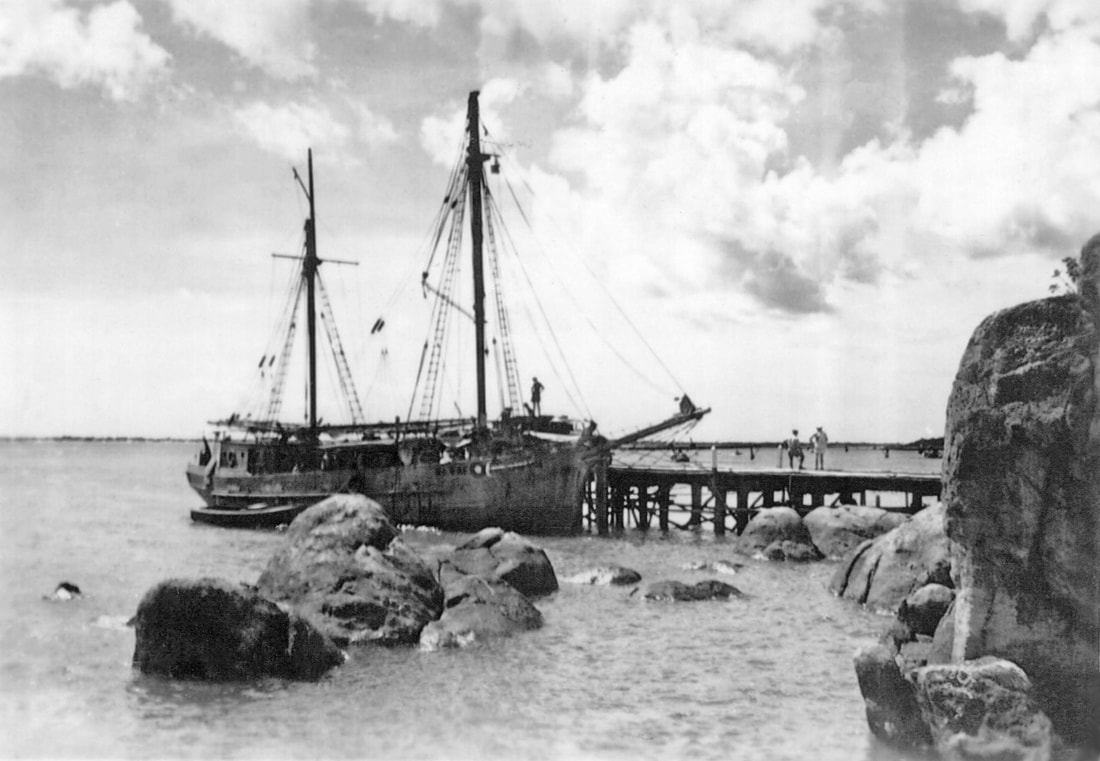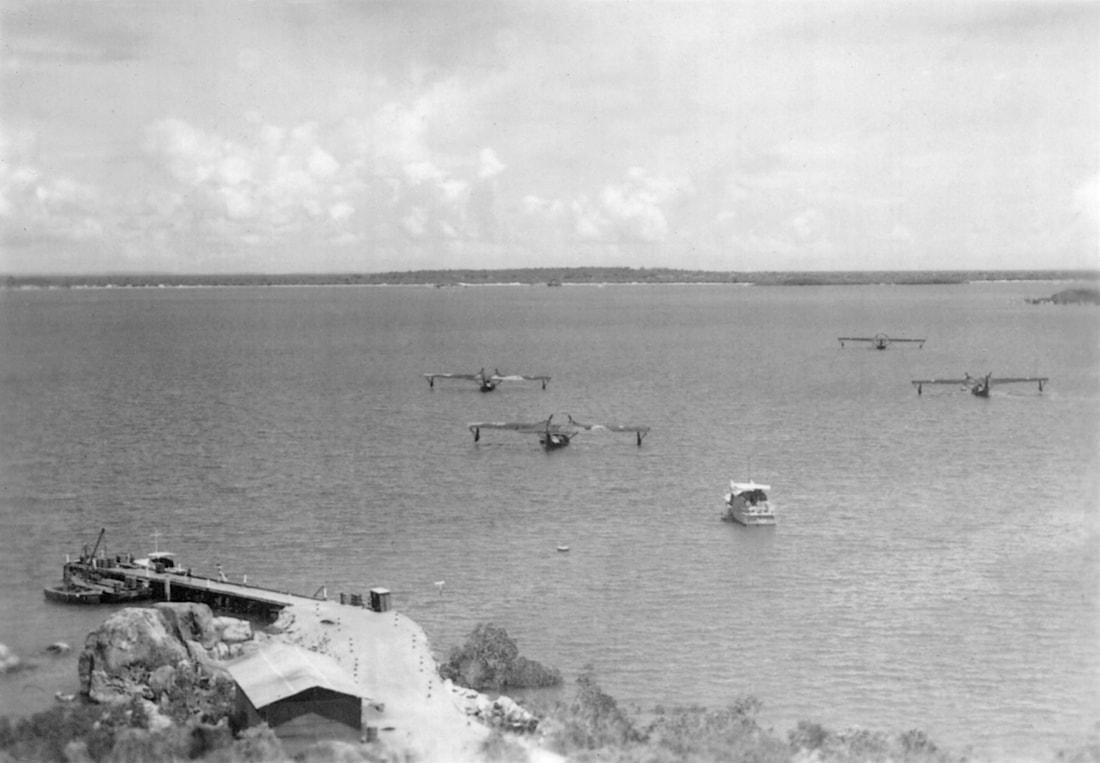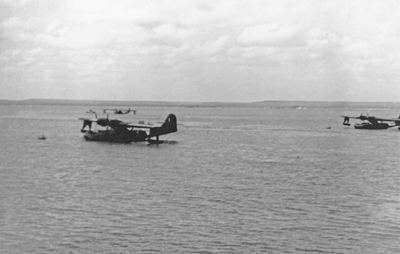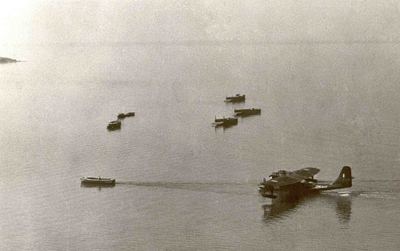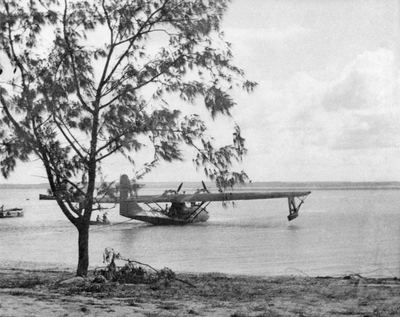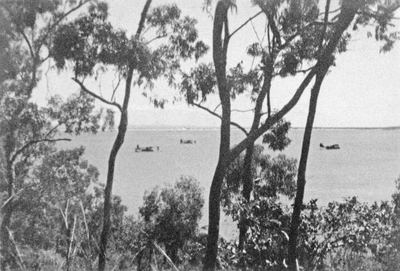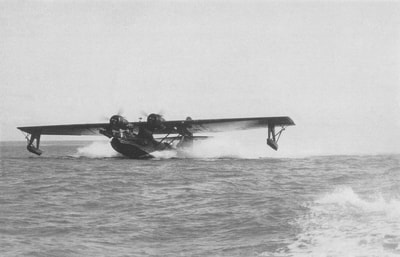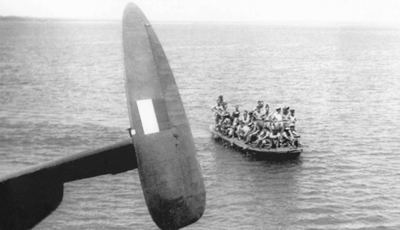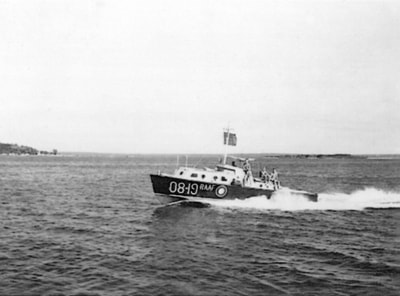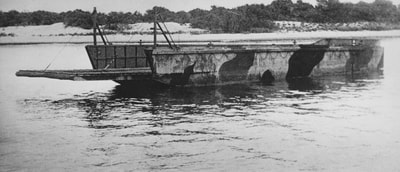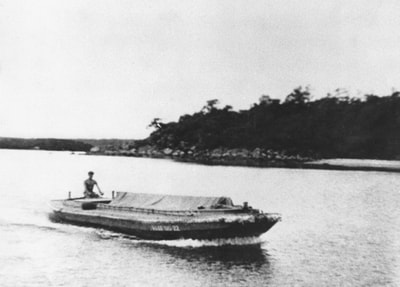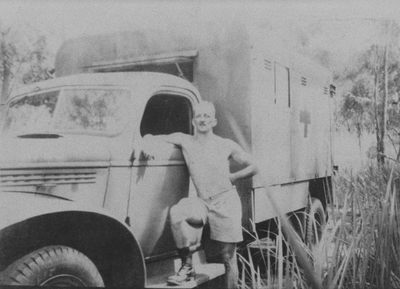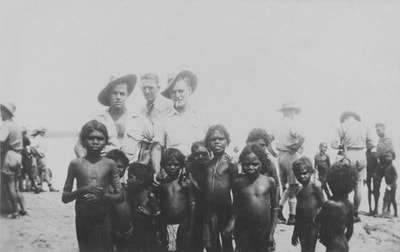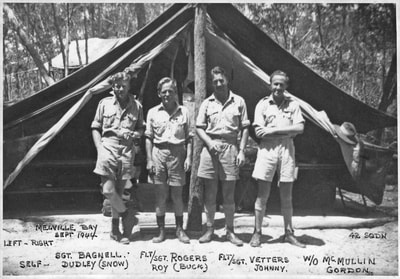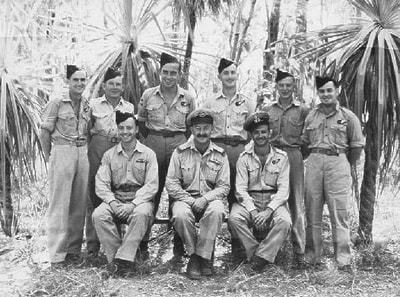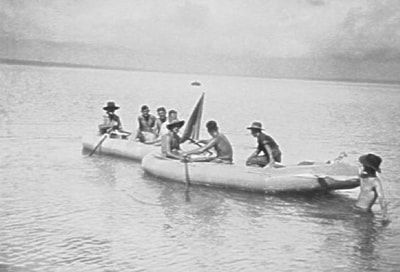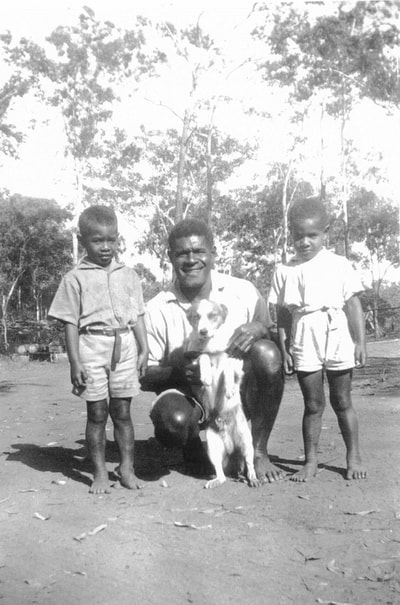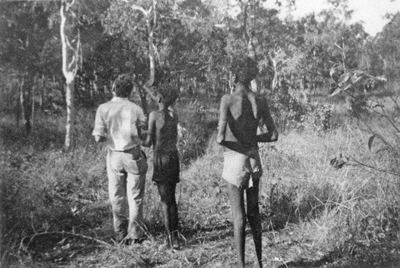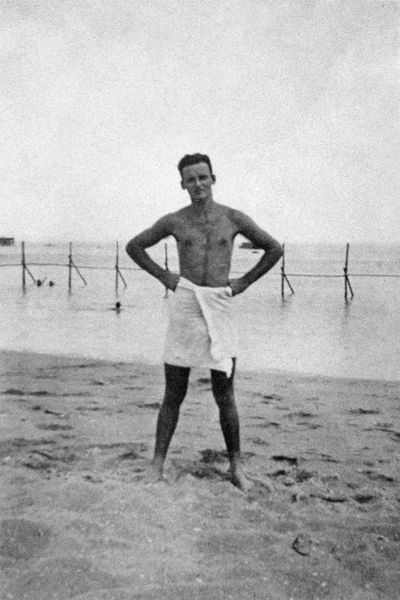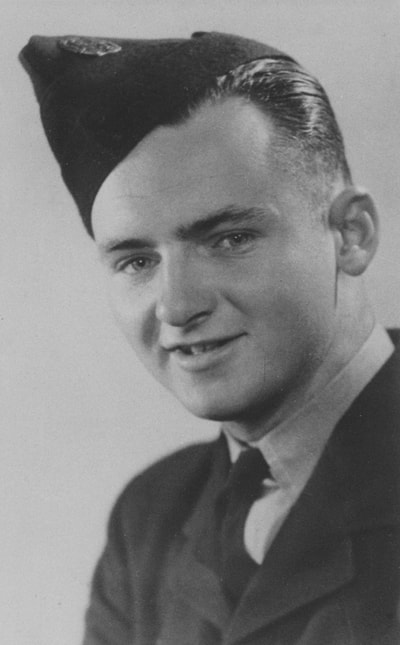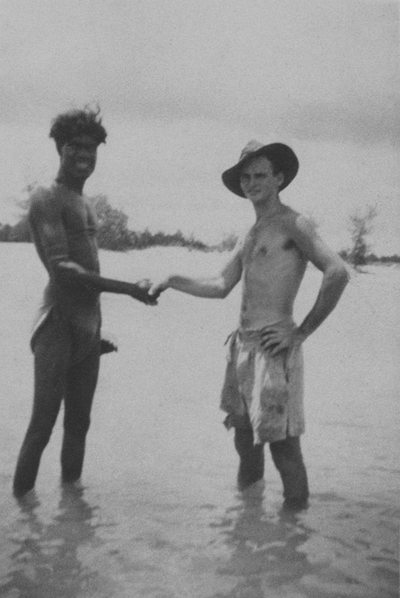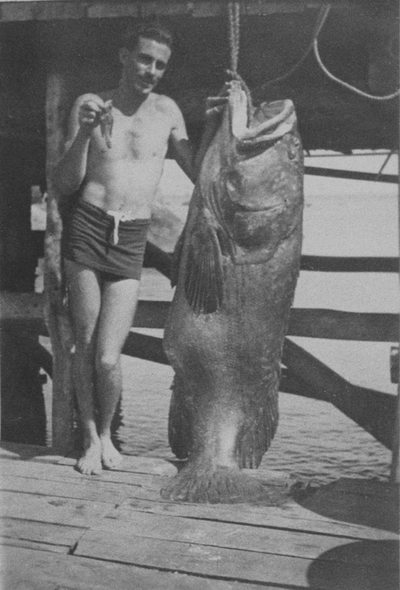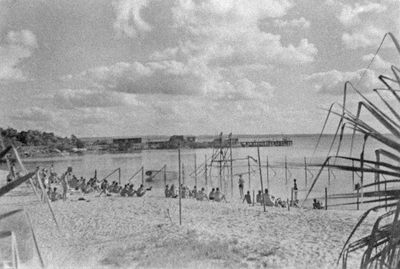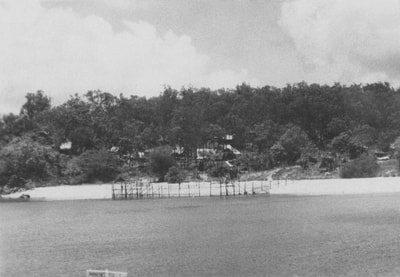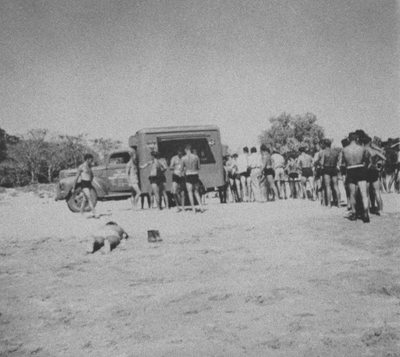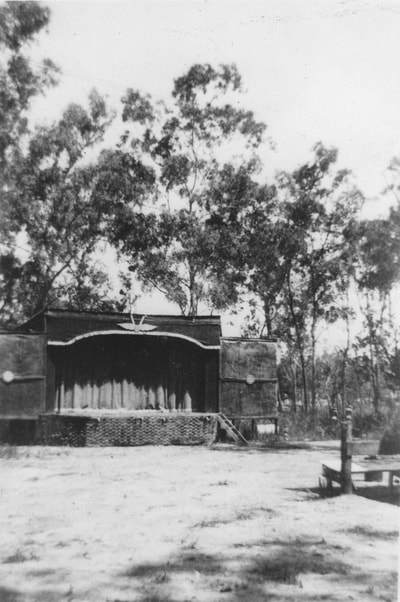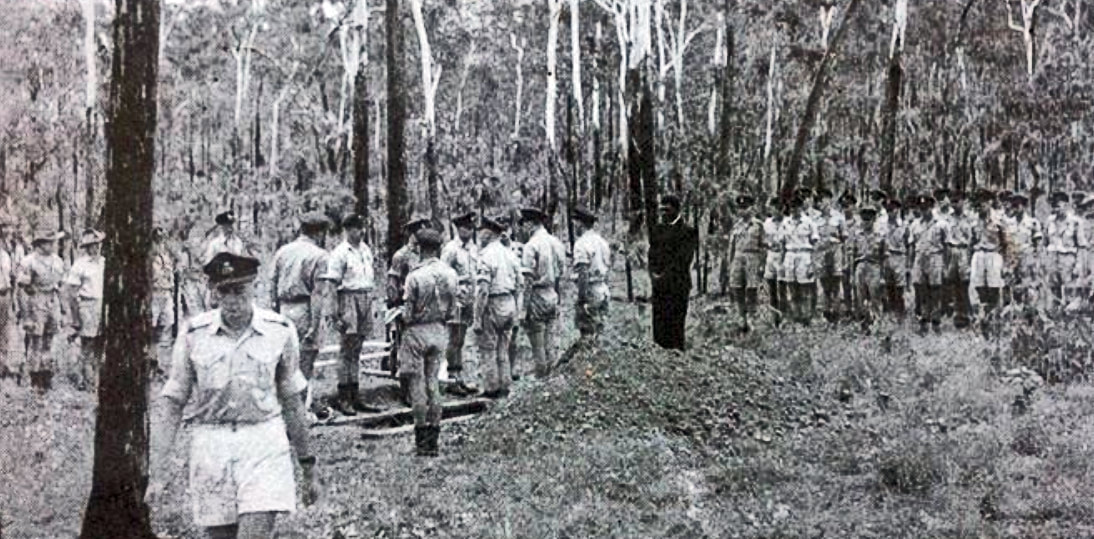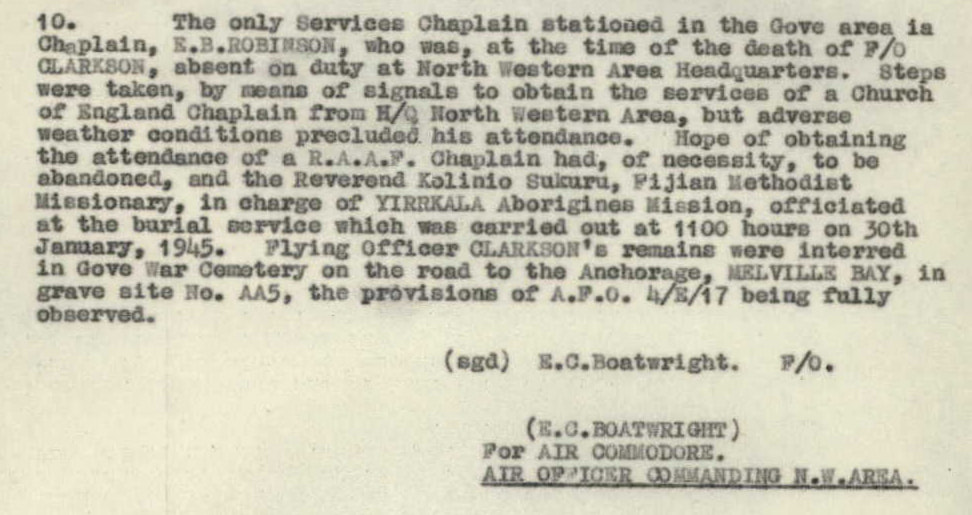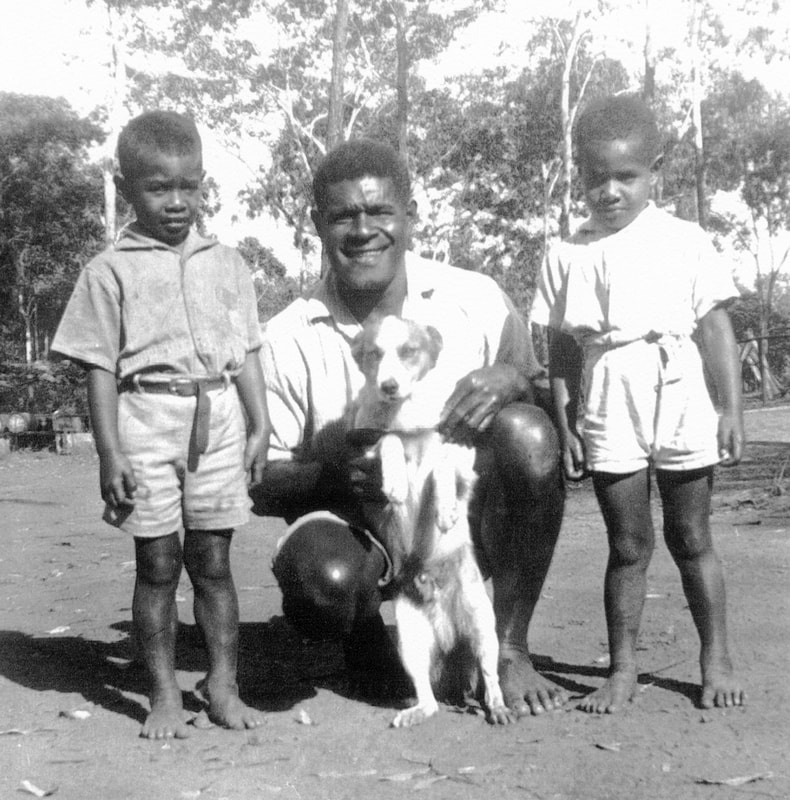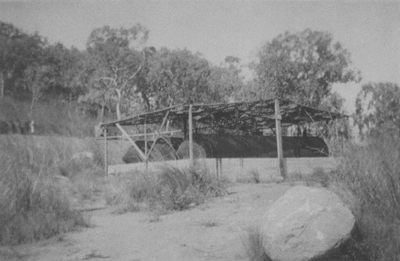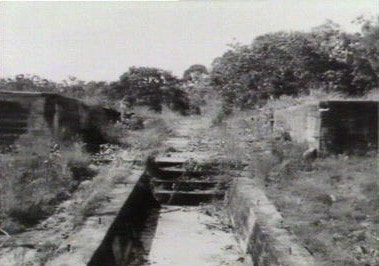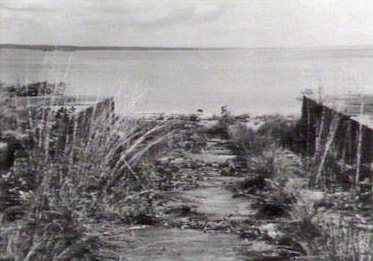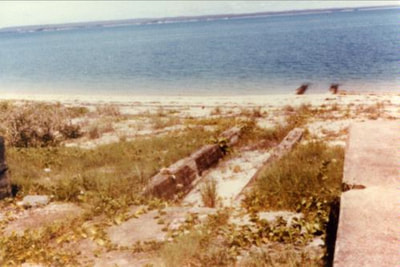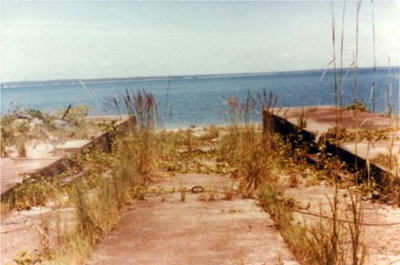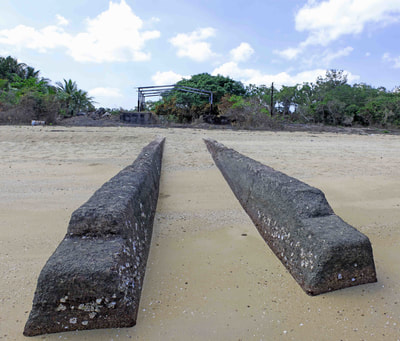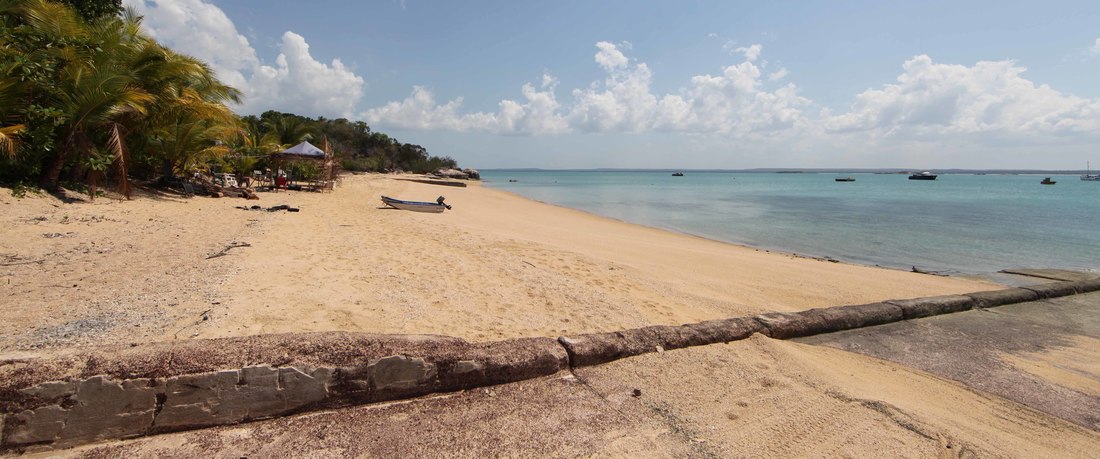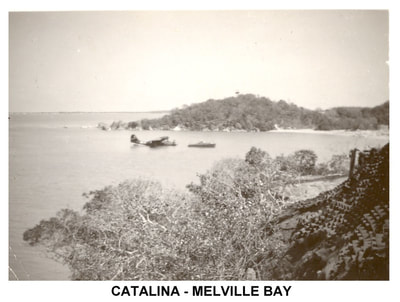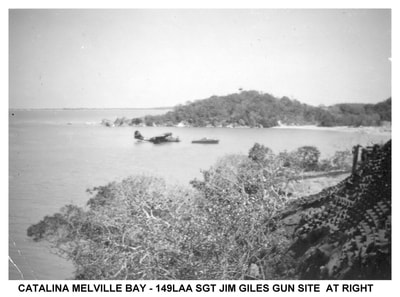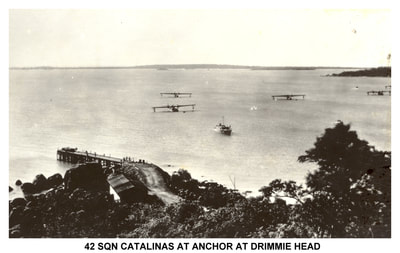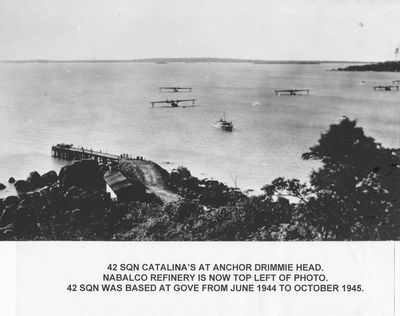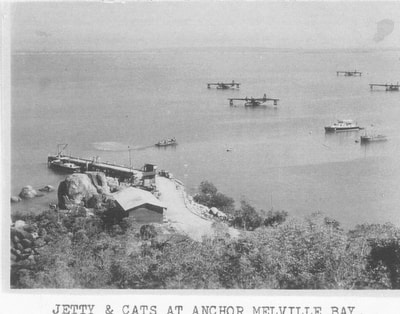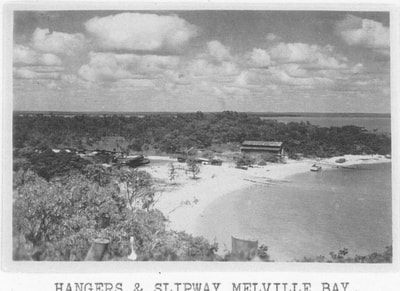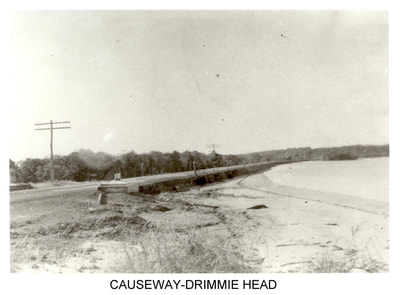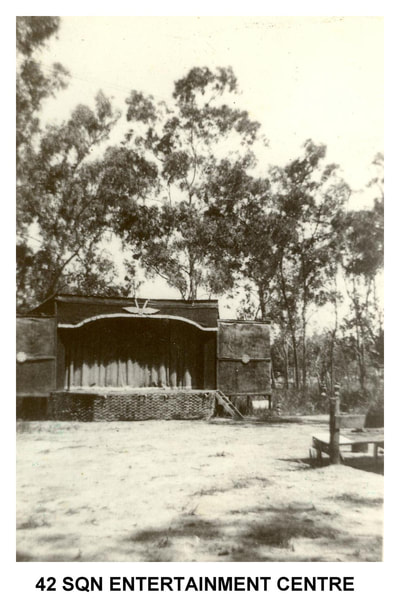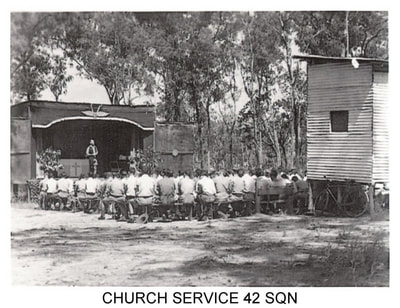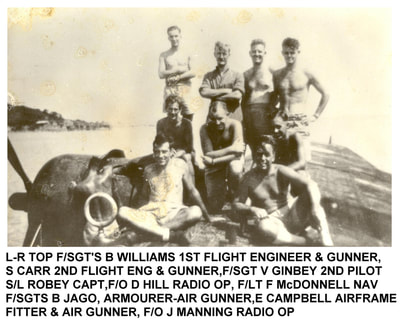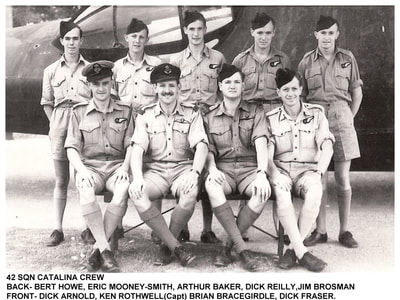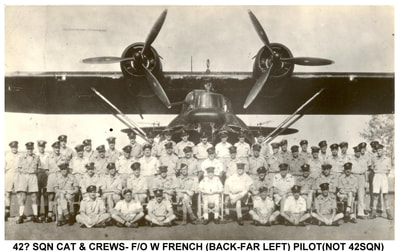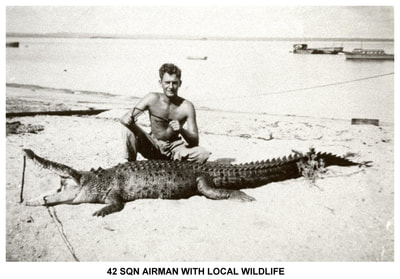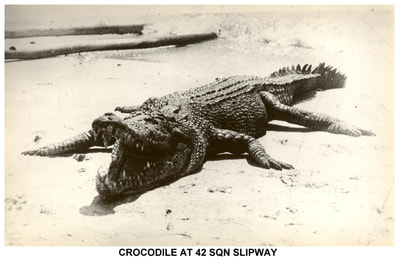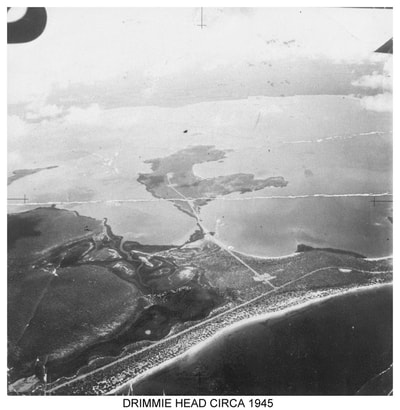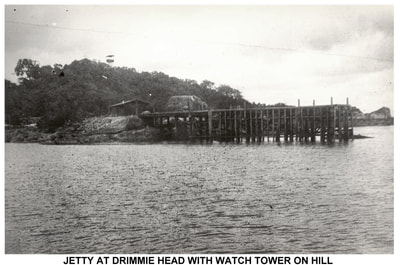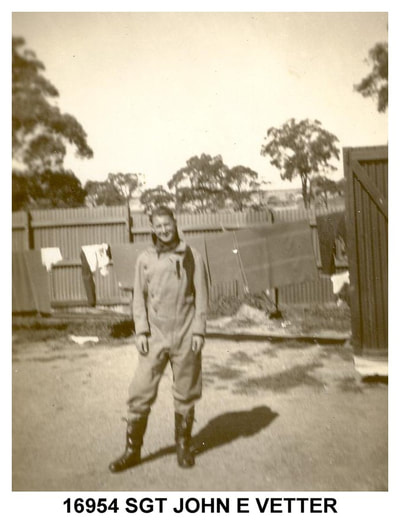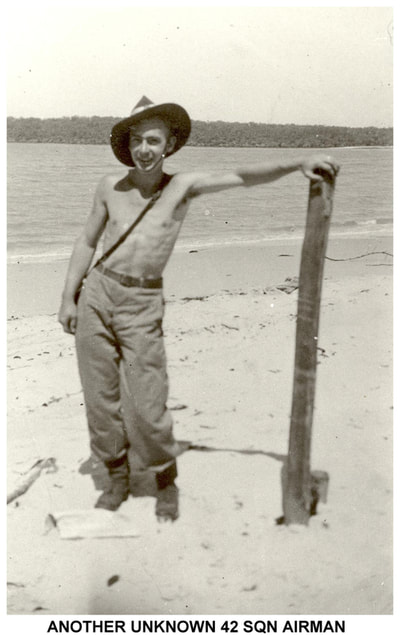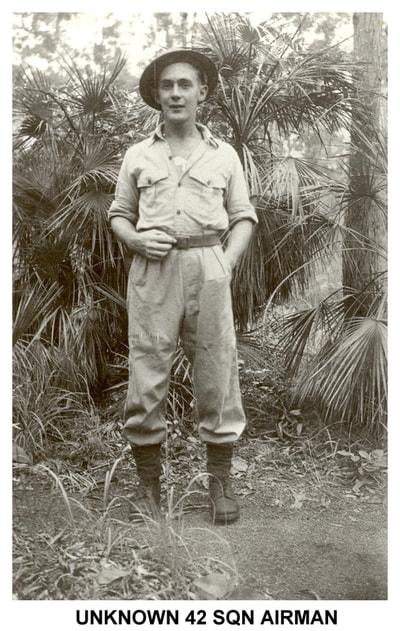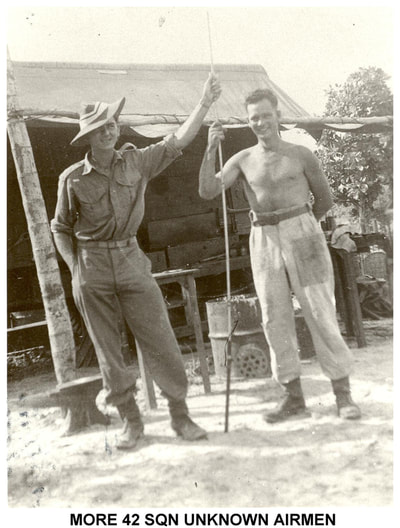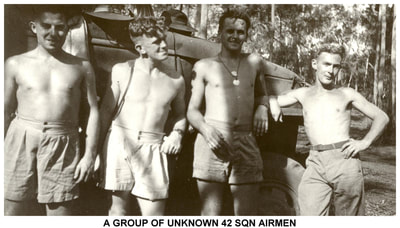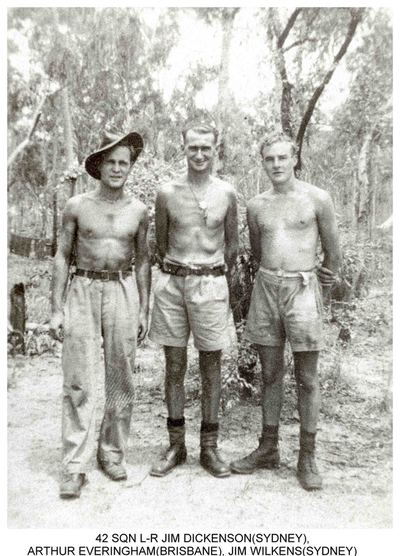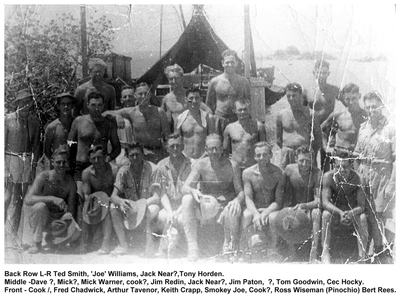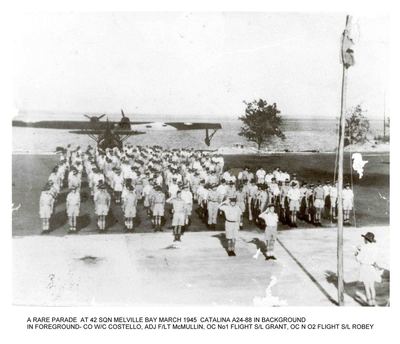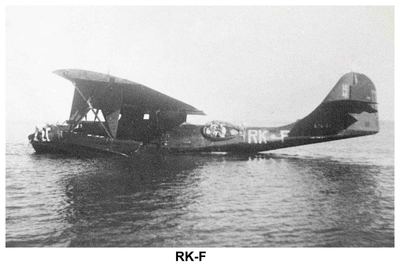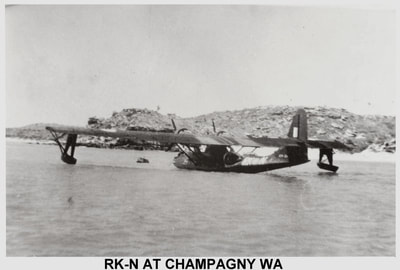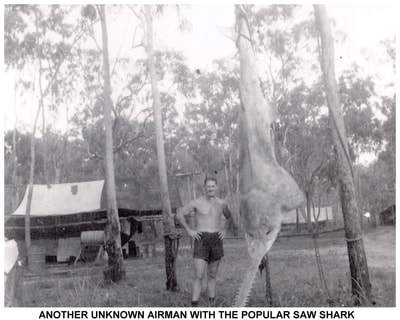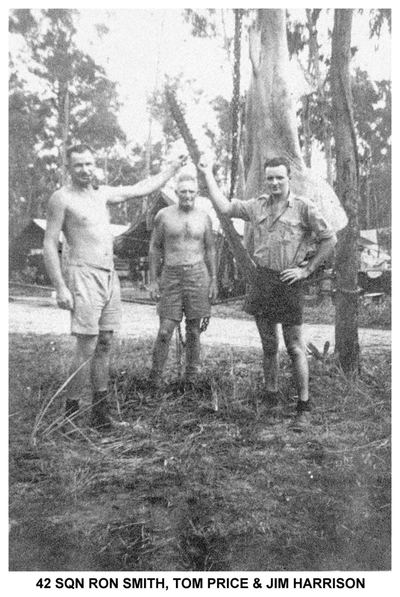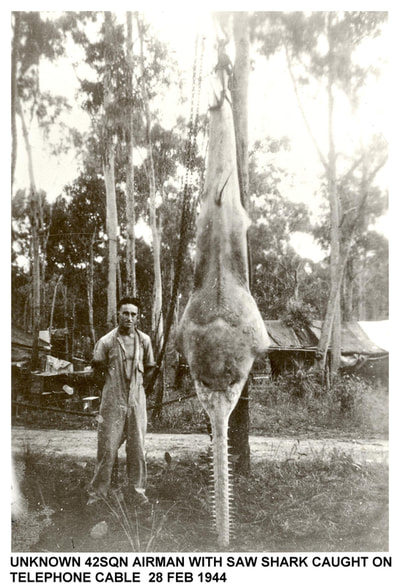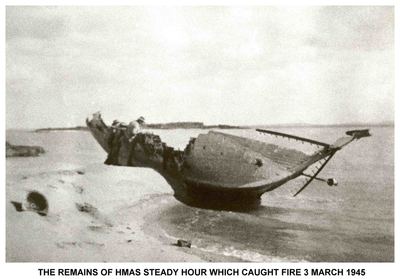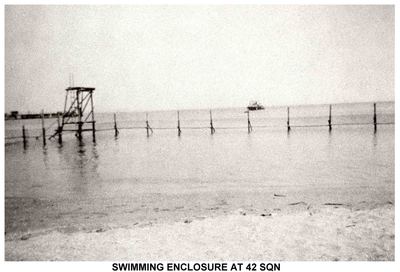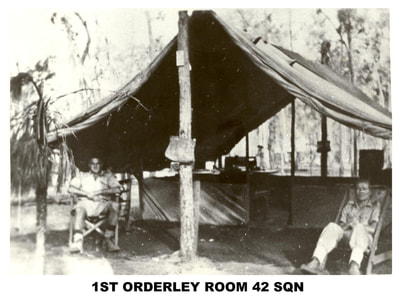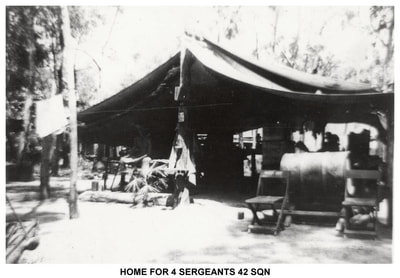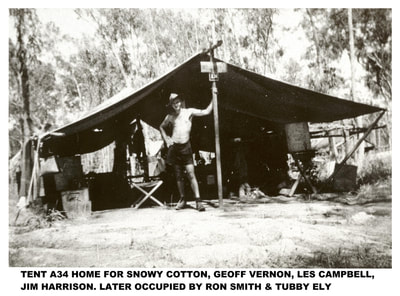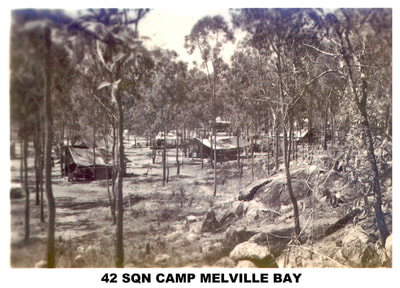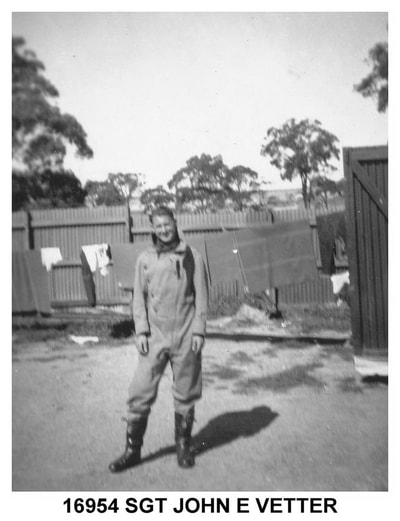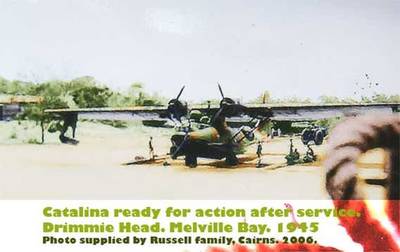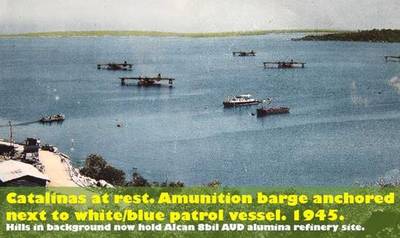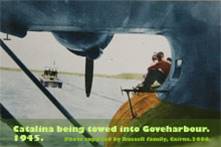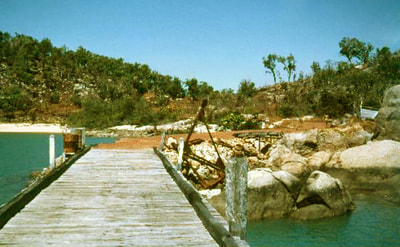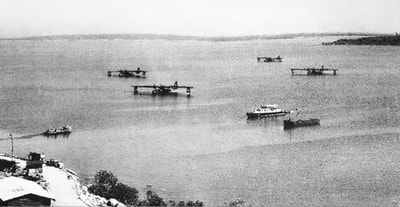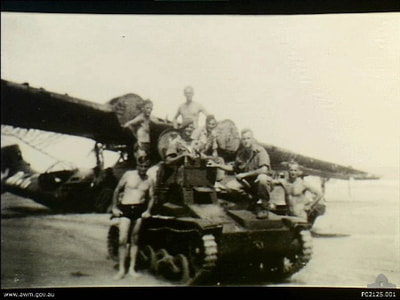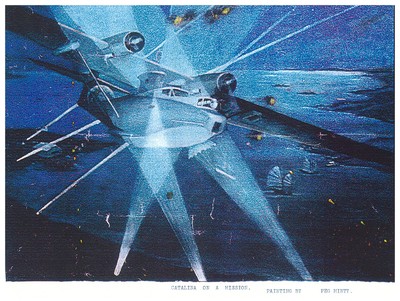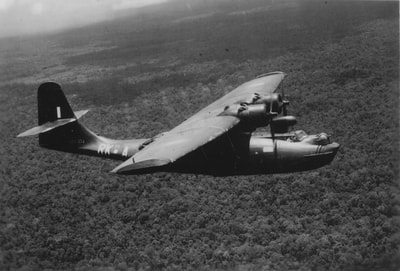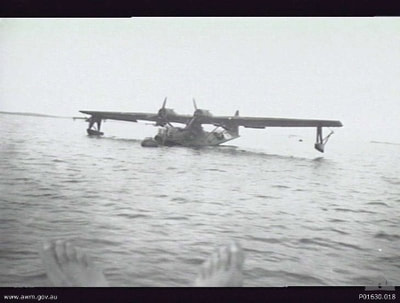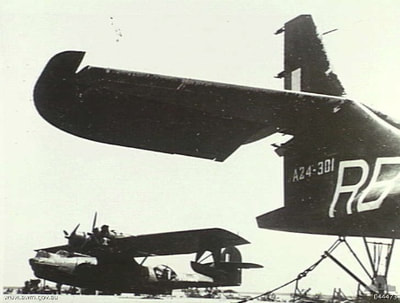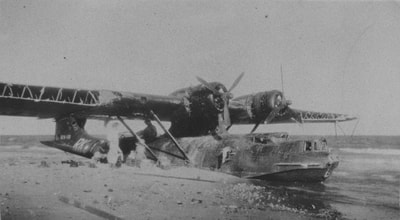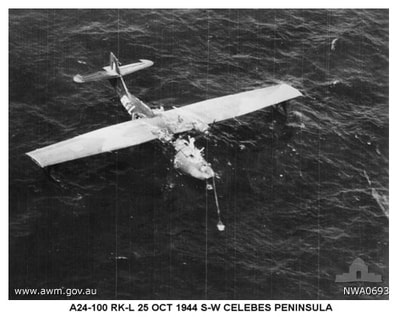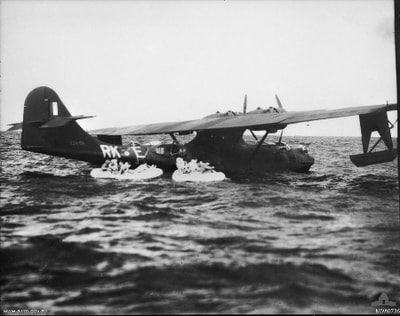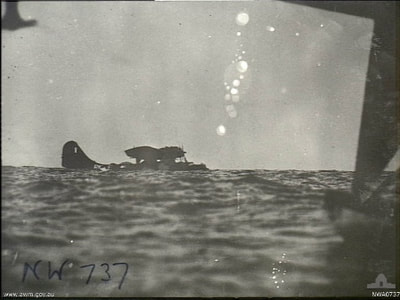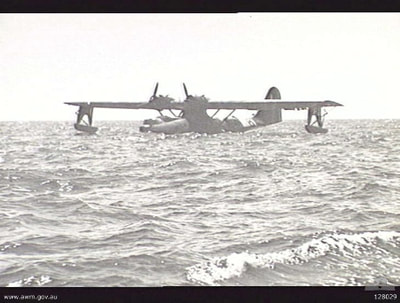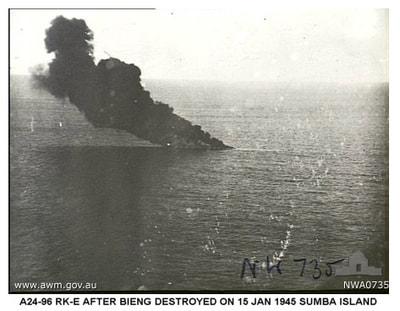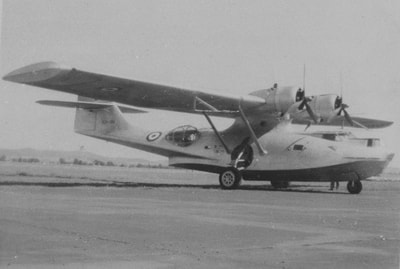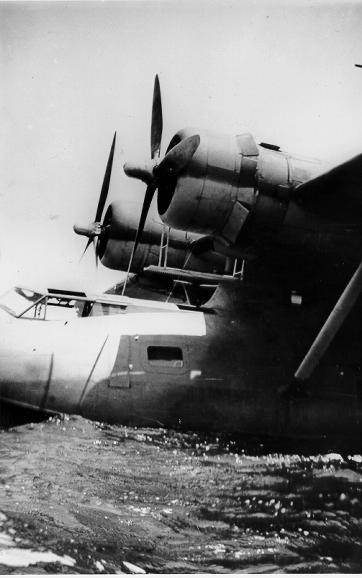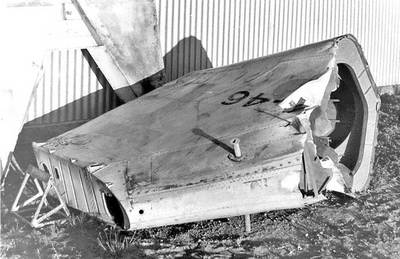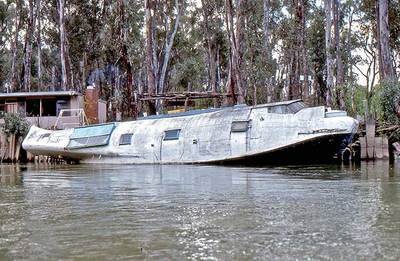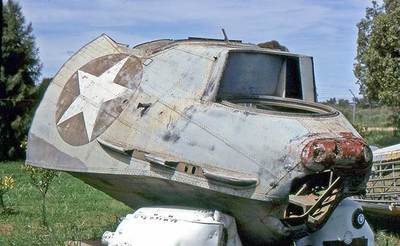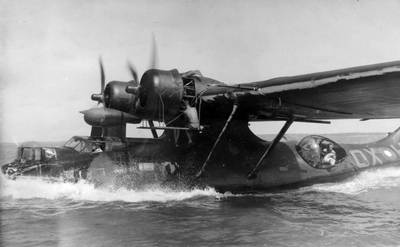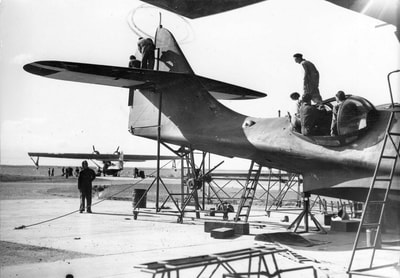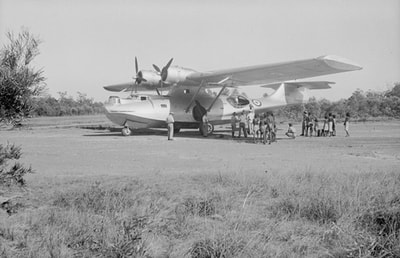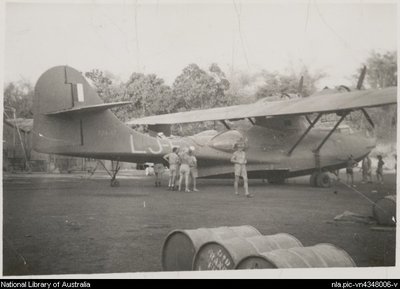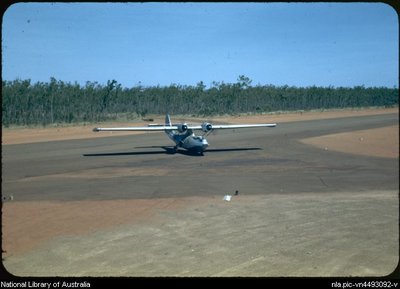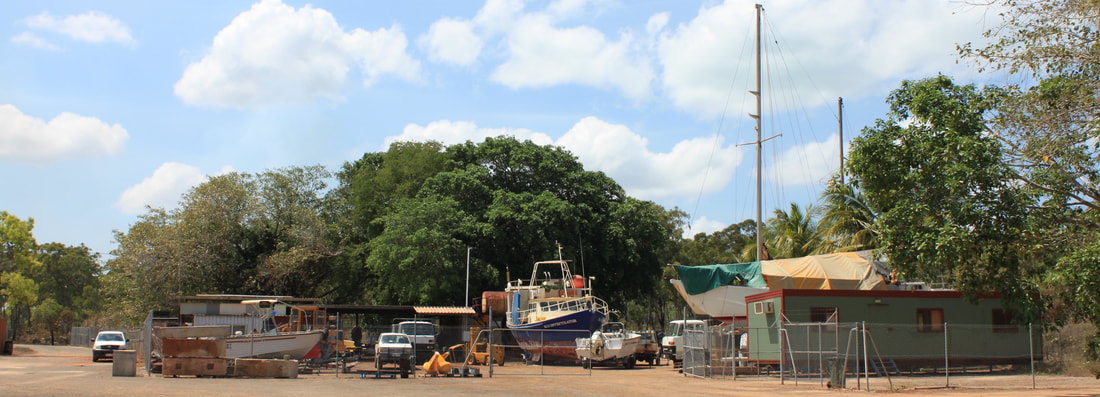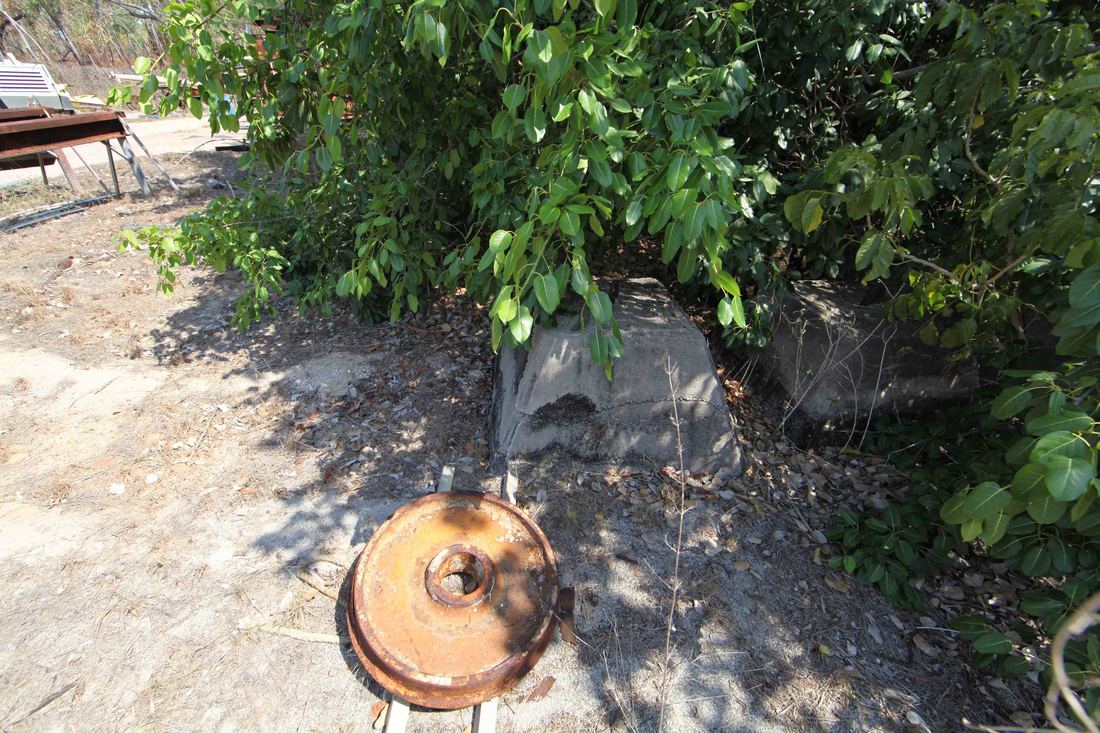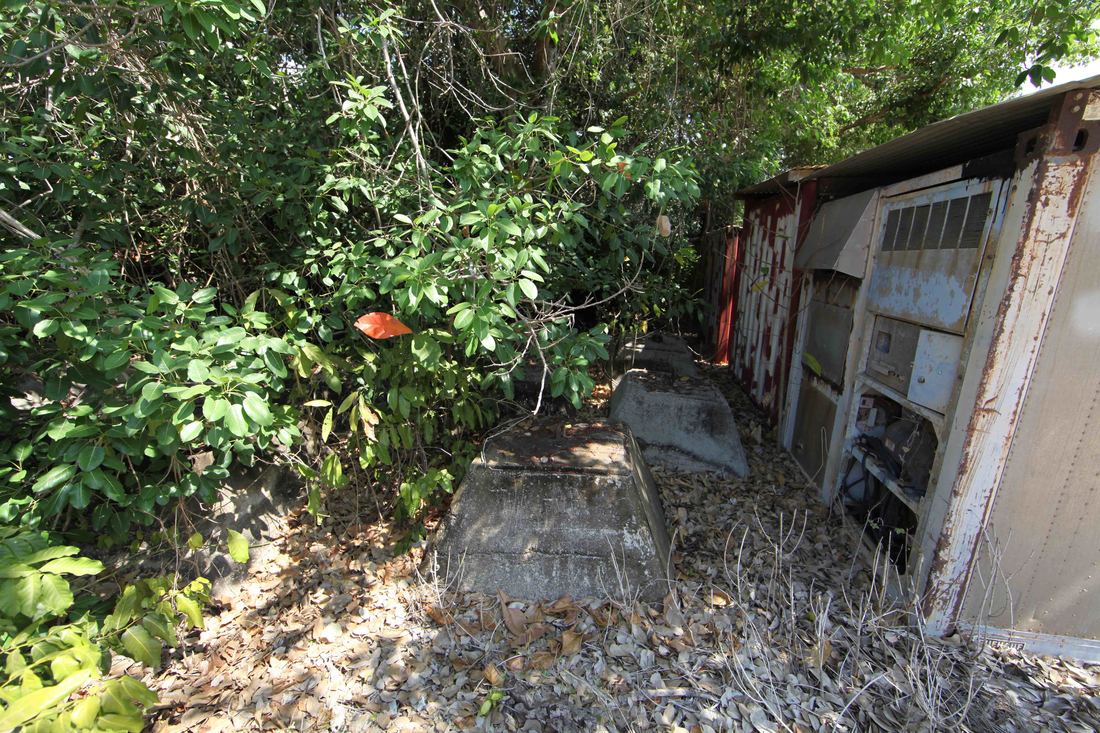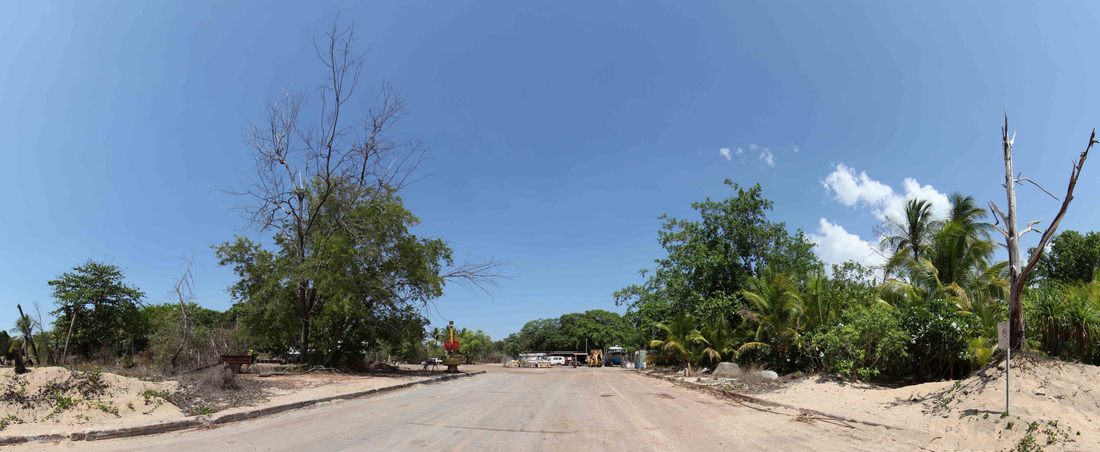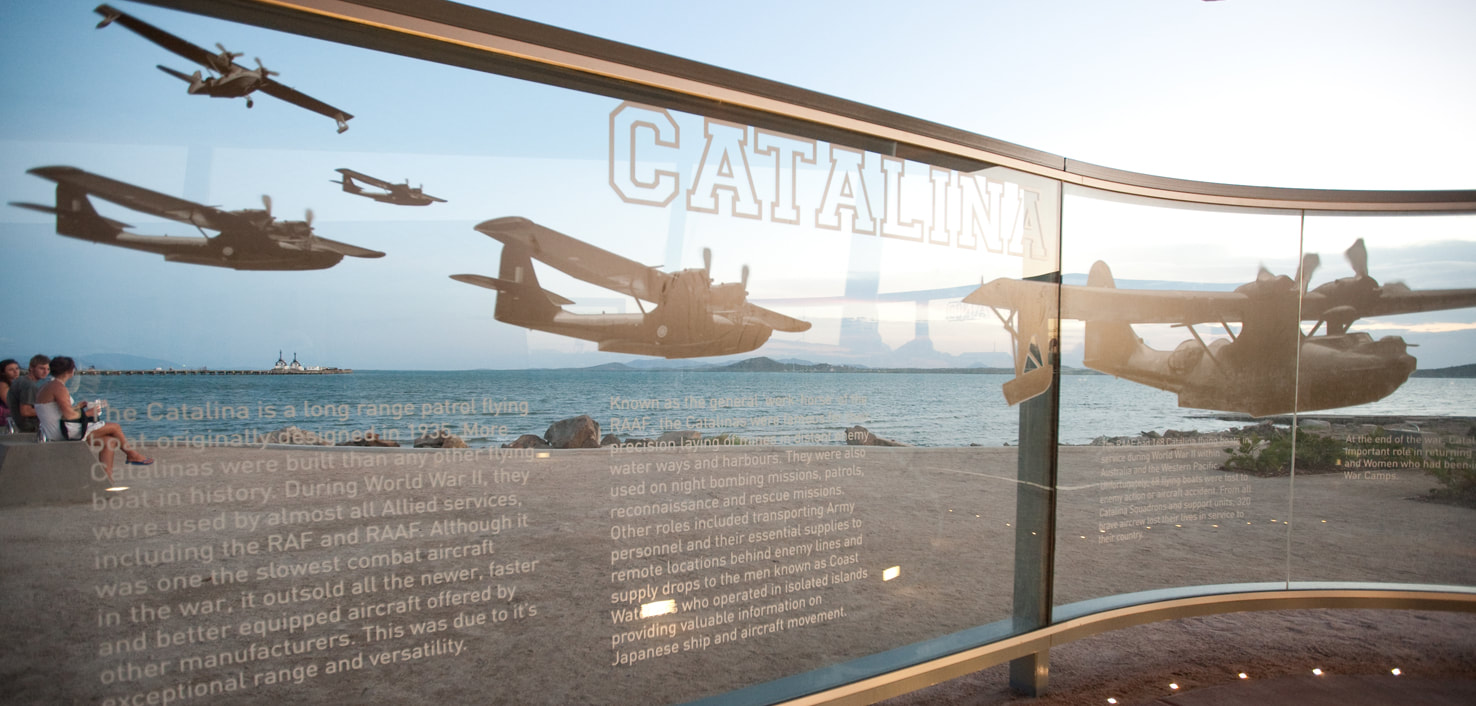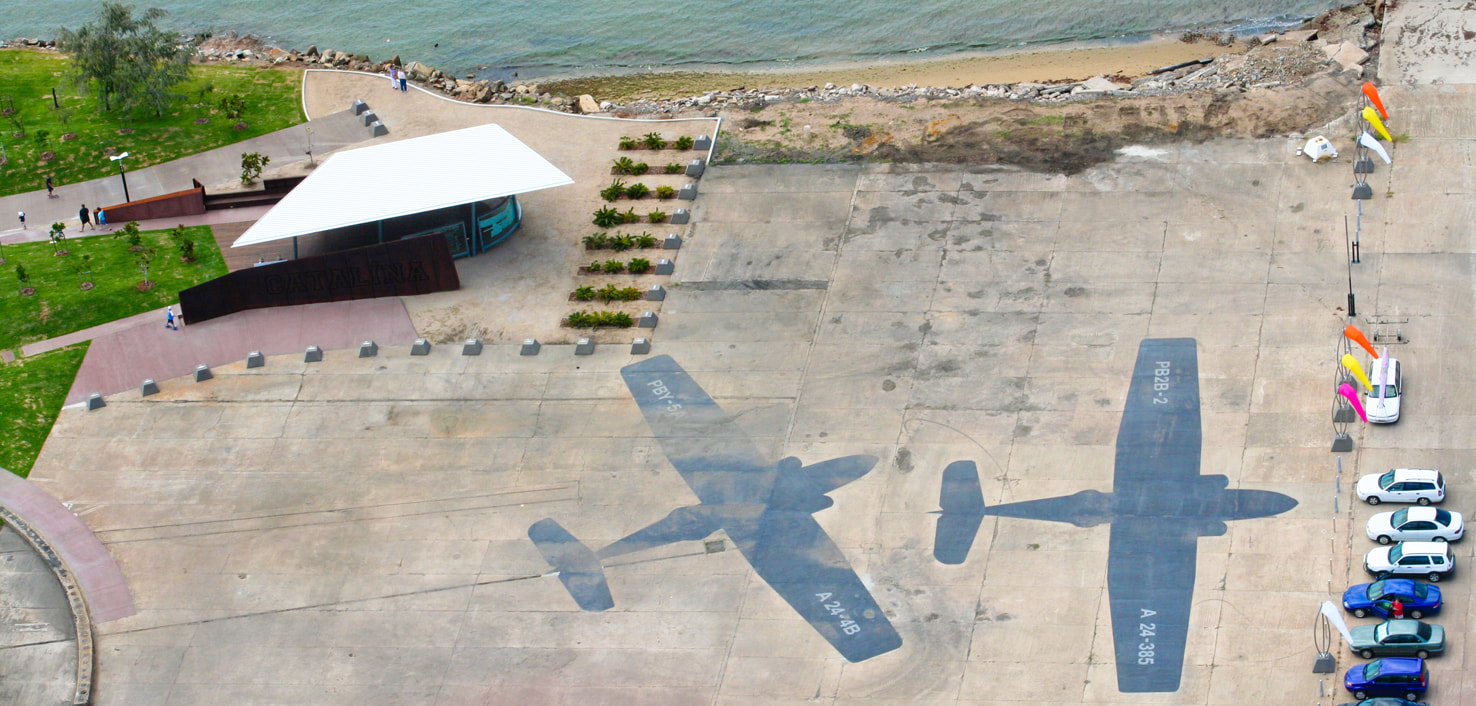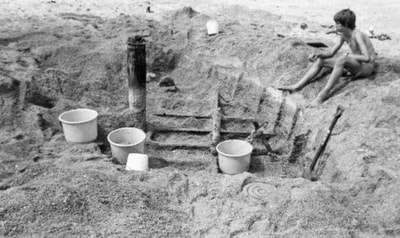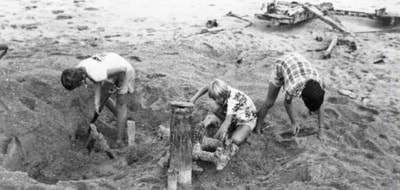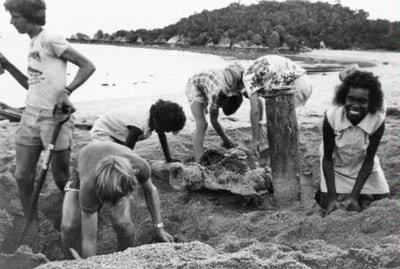Catalina Beach - Drimmie Head - Melville Bay
These WW2 images are from the East Arnhem Regional Council (EARC) Collection, except where otherwise notated. They are being cleaned progressively, as time permits, and are presented here at web density - as a 'work in progress'. The images were discovered on the hard drive of an old computer and their origin is uncertain - attribution is given wherever possible.
42 Squadron - Melville Bay Flying Boat Base
- 1st June 1944 - 42 Squadron was formed at Darwin.
- 11th July 1944 - relocated to Melville Bay.
- Aug - PBY Catalina flying boats & additional personnel arrived.
- 27th Aug - The first operation when 3 Catalinas flew patrols searching for shipping.
- Sept 1944 - 42 Sqn commenced minelaying operations off the Celebes islands.
- 23 Sept - Suffered first loss when a Catalina made forced landing behind enemy lines & the crew rescued by another Cat.
- 24 Oct 1944 – A second Catalina S/N A24-100 [RK-L] was lost. After mine laying off Macassar Harbour the starboard engine was damaged by anti-aircraft fire. Unable to maintain height and with the second engine failing, PO Hull made a forced landing on the sea to spend the next 12 hours uncomfortably close to 4 Japanese airfields before a US B24 Liberator located them and guided in Catalina OX-U which, after sinking RK-L with machinegun fire, returned the crew safely to Darwin to complete an epic 1800 miles round trip.
- Nov 1944 Two aircraft lost to anti-aircraft fire & a detachment of aircraft commenced minelaying operations from Moratai.
- 14/15 Dec - A detachment of 42 Sqn Catalinas deployed to Leyte in the Philippines flew a mining operation to Manila Bay.
- 14 Jan 1945 - 42 Sqn Cat made emergency landing after damage from anti-aircraft fire & 43 Sqn Cat came to the rescue.
- After the Japanese surrender, 42 Sqn repatriated PoWs from Manila and other Australian personnel from Labuan.
- 30 Nov 1945 - 42 Sqn at Melville Bay was disbanded.
No. 42 Squadron was formed at Darwin in Australia's Northern Territory on 1 June 1944. In early July, the squadron's 50 personnel moved to Melville Bay aboard USS John Owen, arriving there on the 11th of the month. During July, No. 42 Squadron was expanded to a strength of 300 personnel, and it received its PBY Catalina flying boats and further personnel in August. The unit conducted its first operation on 27 August when three Catalinas flew patrols searching for shipping.
During 1944 RAAF Catalinas based in northern Australia conducted a highly successful minelaying campaign against Japanese shipping in the NEI, which formed part of the North Western Area Campaign. In order to expand this campaign, Air Vice Marshal William Bostock, the commander of RAAF Command, ordered the Catalina-equipped No. 20, No. 42 and No. 43 Squadrons be assigned solely to minelaying under the command of No. 76 Wing.
No. 42 Squadron commenced minelaying operations in September 1944, laying mines off Celebes. Here it suffered its first loss on 23 September when a Catalina made a forced landing in Japanese-controlled territory; the aircraft's crew were later rescued by a No. 43 Squadron Catalina. The squadron focused on laying mines off Makassar and Pare Pare Bay in Celebes during October, and lost two aircraft to Japanese anti-aircraft guns.[4][5] In November a detachment of aircraft was deployed to Morotai in the NEI, which had been captured by Allied forces in mid-September. From here, they flew minelaying operations against Brunei Bay, Tarakan, Sandakan, and the Balabac Straits. Later in 1944, seven No. 42 Squadron Catalinas were deployed to Leyte in the Philippines from where they mined Manila Bay on the night of 14/15 December.
In January and February 1945, No. 42 Squadron and the other units of No. 76 Wing focused on laying mines off Surabaya and the Laoet Straits.[4][6] One of the squadron's Catalinas was forced to make an emergency sea landing on 14 January after being damaged by Japanese anti-aircraft fire, but its crew was rescued by an aircraft from No. 43 Squadron. From March to May detachments of No. 42 Squadron aircraft laid mines off the coast of southern China and Formosa as part of a No. 76 Wing offensive in this area; these operations were conducted from Jinamoc Seaplane Base in Leyte Gulf with the aircraft refuelling at Lingayen Gulf in Luzon while en route to their targets.[4][7] During June No. 42 Squadron aircraft flying from Jinamoc Island via a refuelling base which had been established at Brunei Bay laid mines off Sumatra while some of its other Catalinas mined Surabaya.[8] Following this, the squadron's aircraft were mainly used to conduct harassment raids on Japanese air bases in south-west Celebes, though they also attacked shipping in the Flores Sea and Banda Sea.
No. 42 Squadron assisted in the repatriation of Australian prisoners of war from Manila and other Australian personnel from Labuan following the Japanese surrender. The squadron also conducted several reconnaissance flights over Japanese-occupied islands. No. 42 Squadron was disbanded at Melville Bay on 30 November 1945. During its existence it conducted 396 operational sorties, during which its aircraft dropped 549 tons of mines and 17 tons of bombs. The squadron also flew 6,330 hours of transport and courier flights. During these operations it lost very few aircraft.
References
Eather, Steve (1995). Flying Squadrons of the Australian Defence Force. Weston Creek: Aerospace Publications. ISBN 1-875671-15-3.
Odgers, George (1968) [1957]. Air War Against Japan 1943–1945. Australia in the War of 1939–1945. Series 3 – Air. Volume 2 (reprint ed.). Canberra: Australian War Memorial. OCLC 246580191.
RAAF Historical Section (1995). Units of the Royal Australian Air Force. A Concise History. Volume 4 Maritime and Transport Units. Canberra: Australian Government Publishing Service. ISBN 0-644-42796-5.
No. 42 Squadron. "Operations Record Book – Forms A50 and A51 Number 42 Squadron Jun 44 – Oct 45". Record Search. National Archives of Australia.
During 1944 RAAF Catalinas based in northern Australia conducted a highly successful minelaying campaign against Japanese shipping in the NEI, which formed part of the North Western Area Campaign. In order to expand this campaign, Air Vice Marshal William Bostock, the commander of RAAF Command, ordered the Catalina-equipped No. 20, No. 42 and No. 43 Squadrons be assigned solely to minelaying under the command of No. 76 Wing.
No. 42 Squadron commenced minelaying operations in September 1944, laying mines off Celebes. Here it suffered its first loss on 23 September when a Catalina made a forced landing in Japanese-controlled territory; the aircraft's crew were later rescued by a No. 43 Squadron Catalina. The squadron focused on laying mines off Makassar and Pare Pare Bay in Celebes during October, and lost two aircraft to Japanese anti-aircraft guns.[4][5] In November a detachment of aircraft was deployed to Morotai in the NEI, which had been captured by Allied forces in mid-September. From here, they flew minelaying operations against Brunei Bay, Tarakan, Sandakan, and the Balabac Straits. Later in 1944, seven No. 42 Squadron Catalinas were deployed to Leyte in the Philippines from where they mined Manila Bay on the night of 14/15 December.
In January and February 1945, No. 42 Squadron and the other units of No. 76 Wing focused on laying mines off Surabaya and the Laoet Straits.[4][6] One of the squadron's Catalinas was forced to make an emergency sea landing on 14 January after being damaged by Japanese anti-aircraft fire, but its crew was rescued by an aircraft from No. 43 Squadron. From March to May detachments of No. 42 Squadron aircraft laid mines off the coast of southern China and Formosa as part of a No. 76 Wing offensive in this area; these operations were conducted from Jinamoc Seaplane Base in Leyte Gulf with the aircraft refuelling at Lingayen Gulf in Luzon while en route to their targets.[4][7] During June No. 42 Squadron aircraft flying from Jinamoc Island via a refuelling base which had been established at Brunei Bay laid mines off Sumatra while some of its other Catalinas mined Surabaya.[8] Following this, the squadron's aircraft were mainly used to conduct harassment raids on Japanese air bases in south-west Celebes, though they also attacked shipping in the Flores Sea and Banda Sea.
No. 42 Squadron assisted in the repatriation of Australian prisoners of war from Manila and other Australian personnel from Labuan following the Japanese surrender. The squadron also conducted several reconnaissance flights over Japanese-occupied islands. No. 42 Squadron was disbanded at Melville Bay on 30 November 1945. During its existence it conducted 396 operational sorties, during which its aircraft dropped 549 tons of mines and 17 tons of bombs. The squadron also flew 6,330 hours of transport and courier flights. During these operations it lost very few aircraft.
References
Eather, Steve (1995). Flying Squadrons of the Australian Defence Force. Weston Creek: Aerospace Publications. ISBN 1-875671-15-3.
Odgers, George (1968) [1957]. Air War Against Japan 1943–1945. Australia in the War of 1939–1945. Series 3 – Air. Volume 2 (reprint ed.). Canberra: Australian War Memorial. OCLC 246580191.
RAAF Historical Section (1995). Units of the Royal Australian Air Force. A Concise History. Volume 4 Maritime and Transport Units. Canberra: Australian Government Publishing Service. ISBN 0-644-42796-5.
No. 42 Squadron. "Operations Record Book – Forms A50 and A51 Number 42 Squadron Jun 44 – Oct 45". Record Search. National Archives of Australia.
Melville Bay Flying Boat Base
The East Arnhem Regional Council Collection
The Hardstand
The Flying Boat Base
Cats at anchor
The Boats
The Men
The Fallen
Twenty-one year old Flying Officer Peter Wilberforce Clarkson (427499) was Captain Sole Pilot in command of Ventura PV1 A59-56 from 13 Squadron based at Gove RAAF Landing Ground, Melville Bay. On the morning of 27 January 1945, he took off from Gove at 1010hrs for a gunnery training exercise of 1.5 hours duration and failed to return.
Bad weather delayed the search for survivors and on the 29th of January a Catalina of No 42 Squadron located survivors at 0810 to the NW of Bremer Island. Clarkson was conscious when rescued but subsequently died of his injuries at 1245 on 29/1/45. Missing presumed dead are F/L Calder, W/O Peacock & F/S Ames. Two other members of the crew survived - W/O Cathro & W/O Murdoch. Despite diving operations the main fuselage was nor found and no human remains recovered.
Neither of the survivors, nor the pilot, was able to explain the cause of the crash which occurred when sea conditions were 'glassy' and 'following considerable "G" pressure caused by a turn or pull up was experienced just prior to the crash.' The distance to the surface is notoriously difficult to judge in these conditions and a number of planes were lost through dipping a wing during gunnery practice. The crash occurred within sight of Cape Wilberforce which Flinders named for the renowned reformer and slavery abolitionist William Wilberforce.
F/O Clarkson was subsequently re-interred at the ADELAIDE RIVER WAR CEMETERY C.B.8.
Bad weather delayed the search for survivors and on the 29th of January a Catalina of No 42 Squadron located survivors at 0810 to the NW of Bremer Island. Clarkson was conscious when rescued but subsequently died of his injuries at 1245 on 29/1/45. Missing presumed dead are F/L Calder, W/O Peacock & F/S Ames. Two other members of the crew survived - W/O Cathro & W/O Murdoch. Despite diving operations the main fuselage was nor found and no human remains recovered.
Neither of the survivors, nor the pilot, was able to explain the cause of the crash which occurred when sea conditions were 'glassy' and 'following considerable "G" pressure caused by a turn or pull up was experienced just prior to the crash.' The distance to the surface is notoriously difficult to judge in these conditions and a number of planes were lost through dipping a wing during gunnery practice. The crash occurred within sight of Cape Wilberforce which Flinders named for the renowned reformer and slavery abolitionist William Wilberforce.
F/O Clarkson was subsequently re-interred at the ADELAIDE RIVER WAR CEMETERY C.B.8.
The Rev. Kolinio Saukuru
Renowned Fijian Methodist Missionary Kolinio Saukuru arrived in 1933 and spent 15 years on the missions at Goulburn Island, Milingimbi, Elcho and Yirrkala. At a civic reception by the Lord Mayor of Hobart in 1949 the Rev. Kolinio was congratulated for his work amongst the Aboriginal people of NE Arnhem Land. The Rev. AWR Milligan noted the "athough Kol's great-grandfather was a cannibal, his grandfather was one who escaped from the cannibals when the late Rev. Thomas Baker and some natives were ambushed on a visit to inland Fiji to attempt conversions. The grandfather later became a teacher and 'Kol' and his father became ministers." The Lord Mayor remarked that his uncle, Mr. E Sprott went to Fiji as a missionary 35 years ago and now "Fijians were coming to Australia as missionaries to the aborigines."
The Standing Archaeology
Display Images
These images appear to have been mounted for various displays with some showing signs of adhesive bleed - in most cases they are yet to be uncleaned.
Images from 'identified' sources
42 Sqn A24-96
Other Catalina Images
Catalina Moorings
Bowen Foreshore - Heritage Tourism
After Port Moresby came under attach, RAAF Catalina squadrons 11 & 20 relocated to the safety of Bowen from which they undertook long range operations & where a temporary slipway way built in mid-1942. They moved to Karumba in the Gulf of Carpentaria in November 1942 and Bowen was developed as a repair and maintenance facility. The creation of the landmark visitor information centre commemorated the 70th anniversary.
Catalina Beach wreck 1978
Tracey Billot recalls on the PastMasters Facebook page......'I was there - Morgan Flint was the teacher - there was about 8-10 of us kids excavating on a really low tide at the Catalina Boat ramp at Drimmie Head. We sifted through all the sand under an old Tamarind tree on the beach up near the large granite rocks. There are houses and boats everywhere there now. I have my own photos of this - from memory we found dog tags pottery and other cool things from WWII era. I think Morgan donated the photos to the NT Library. We were students from Nhulunbuy Area School mid 70's'.
NTL dates the images at 26 February 1978 but some students think it was 1977 as the tides are not extreme in February even by Gove standards and it is a pretty warm time of year. There is a similar Sampson post on the bow of the scow in the images above which would make some sense although they are a standard feature of many vessels and the winch is also a common item but in combination with a shallow drafted metal craft known to have worked in the vicinity it is a possibility. All the more reason to have another look although it is now 40 years ago.
NTL dates the images at 26 February 1978 but some students think it was 1977 as the tides are not extreme in February even by Gove standards and it is a pretty warm time of year. There is a similar Sampson post on the bow of the scow in the images above which would make some sense although they are a standard feature of many vessels and the winch is also a common item but in combination with a shallow drafted metal craft known to have worked in the vicinity it is a possibility. All the more reason to have another look although it is now 40 years ago.
Melville Bay today
Resources & Notes
|
|
| ||||||||||||||||||
|
|
| ||||||||||||||||||
|
| ||||||||||||
Air Sea Rescue source - Royal Australian Air Force MARINE SECTION. the Forgotten Era of MEN & VESSELS. Leslie R. Jubbs
